We spent almost a week in Vilcabamba, Ecuador at the Izhcayluma Hostel doing free yoga, enjoying cheap massages, visiting the health food stores, eating at the local organic market and chatting with other travellers before crossing the border to start overlanding through northern Peru.
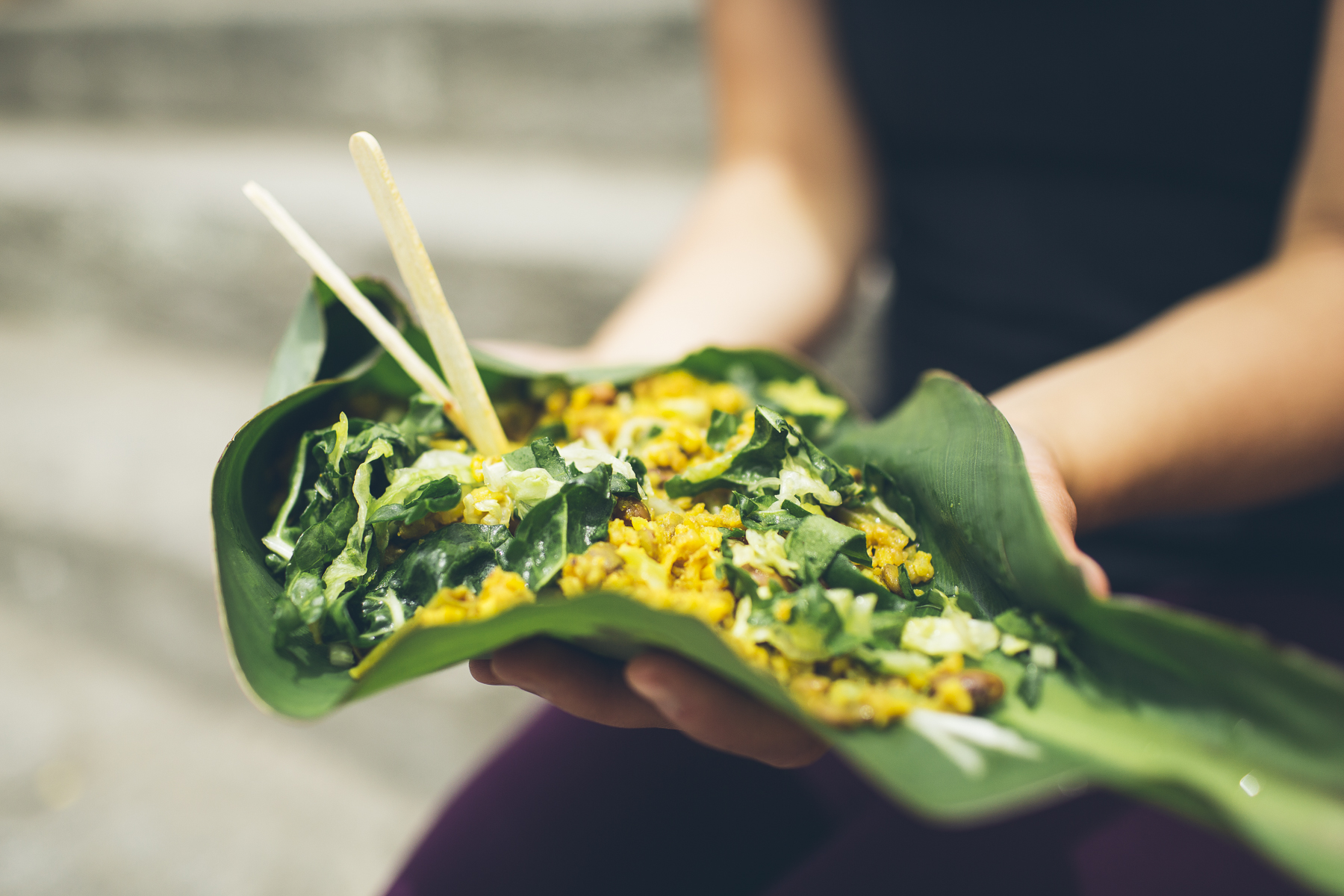


Eventually the day had come for us to step into the unknown: Peru. To be honest, we weren’t sure what to expect. We heard mixed reviews: we were told by some that the scenery was epic but the towns were run-down, the people weren’t as friendly, there was garbage everywhere, the roads take forever to drive and the Peruvian drivers are terrible. I have to admit I was feeling a bit apprehensive about the whole thing up until about a week before we crossed the border.
We packed up early in Vilcabamba and hit the road with Simon, Karie, Ty and Jamie of Our Road Life in order to the reach the border and set up camp before dark. The drive went back and forth between paved and dirt sections complete with spectacular mountain scenery. Ecuador plans to pave most of the road so we considered ourselves lucky to be able to hit the orange-y brown soft dirt before it becomes concrete. We drove the route during dry season so we were thankful not to be caught in a wet, muddy, slippery mess with steep drop offs into the trees below.

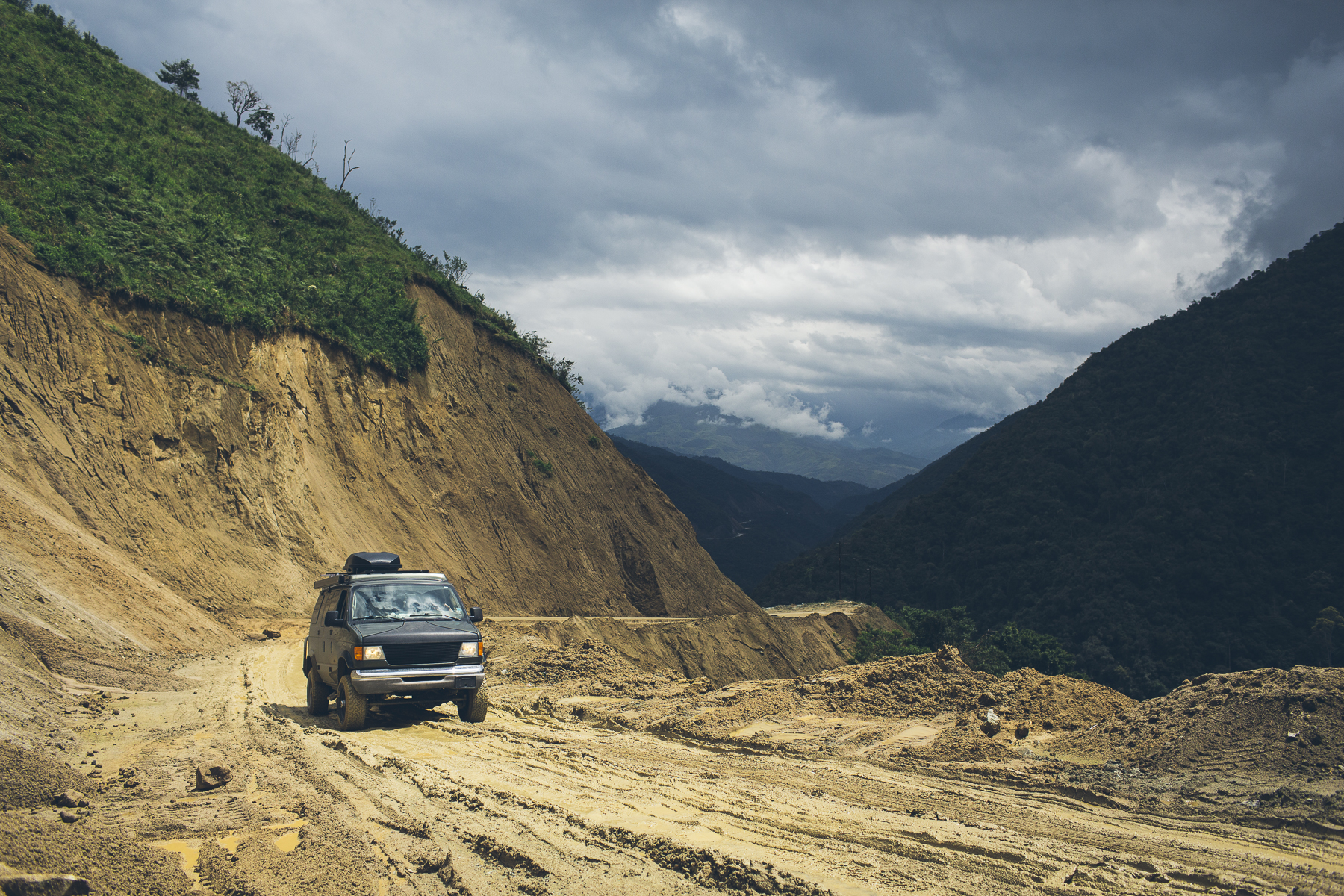
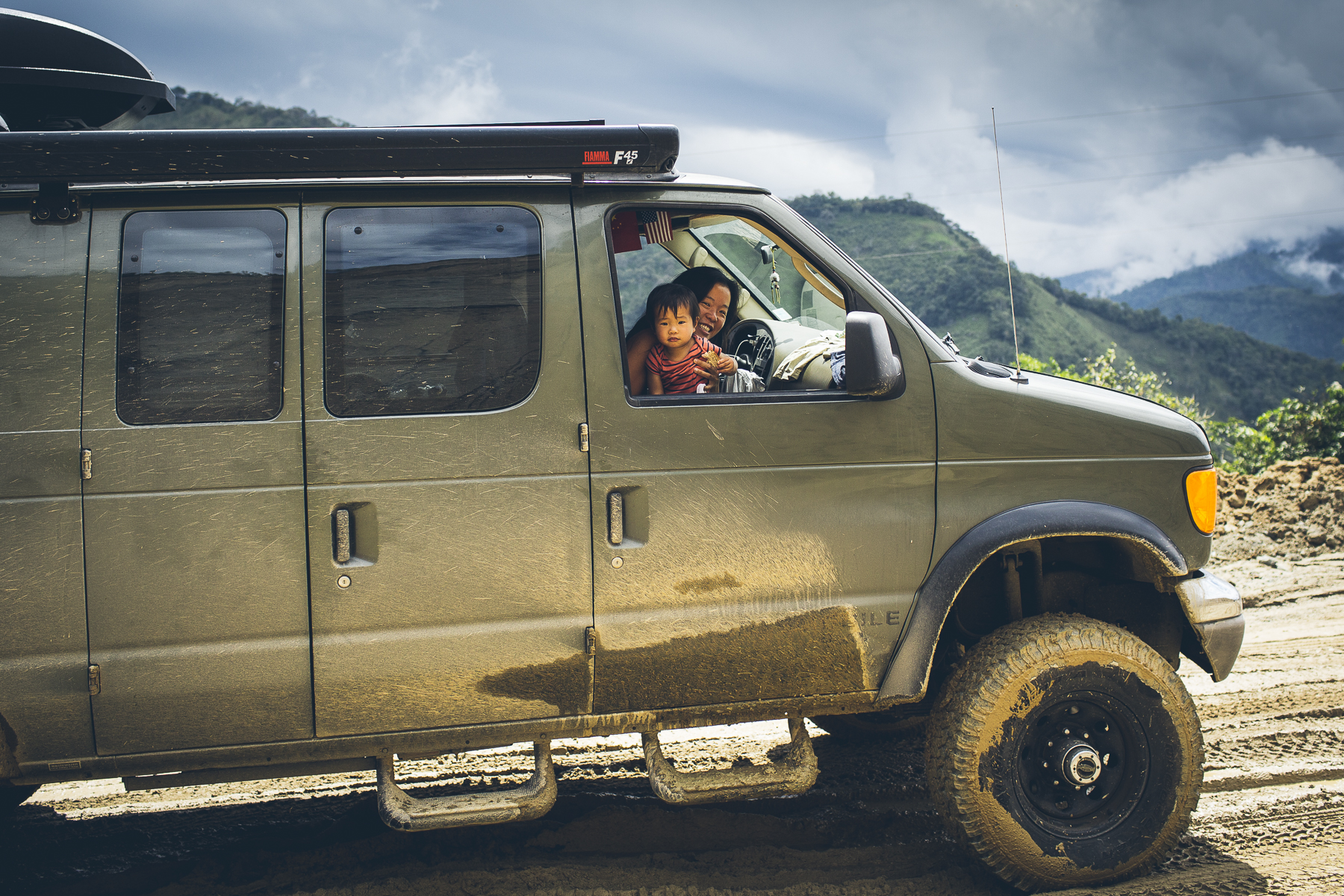
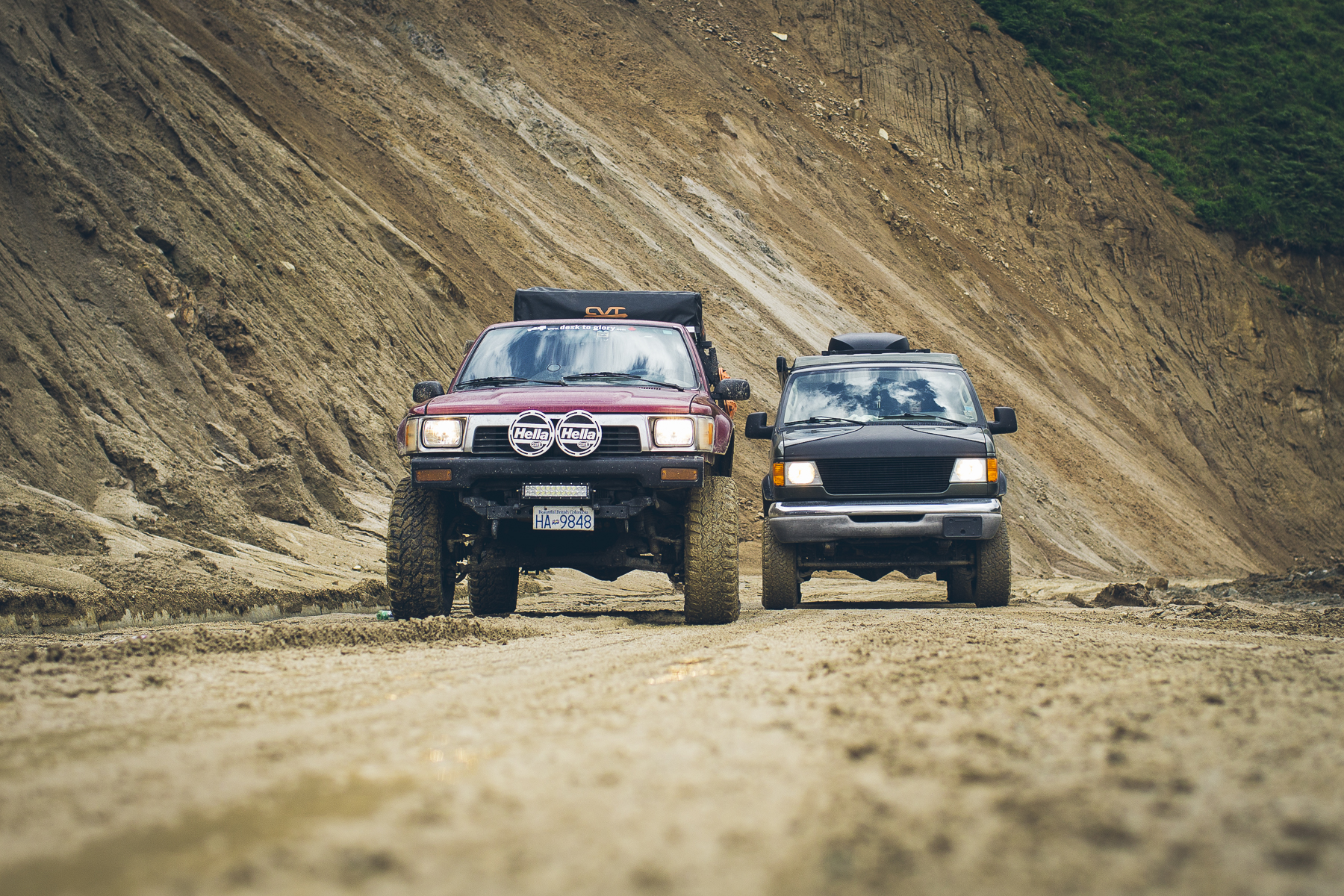


The truck had been making a weird noise during the last part of our drive in Ecuador from Cuenca to Vilcabama. Richard thought it sounded like ticking from an exhaust leak, but it sounded minor (like a blown exhaust gasket) and he figured he would look at it when we arrived in a town with more infrastructure. About half an hour into our drive towards the border the ticking noise became louder. We parked the truck and Richard lifted the hood to figure out where the noise was coming from. At this point he still figured it was a broken exhaust gasket and there was nothing we could do about it, so we continued on. Approximately half an hour later it became obvious that it was more than a gasket when the ticking became a roar as the exhaust down pipe broke off completely. Shit. Here’s the exciting stuff… the intermediate pipe (that connects to the exhaust manifold) broke at the factory weld. It was impossible to see the crack at first, but became painfully obvious when the pipe was no longer connected. Doi! We suspected that the shotty Guatemalan exhaust repair fiasco contributed to its cracking. Richard borrowed some bailing wire from Simon to hold the pipe in place, and we continued on our way listening to the eardrum-shattering sound of our 22RE engine bellowing out of the busted exhaust pipe. Eventually, when the exhaust cooled, a tin can and a few gear clamps made for more of a permanent-temporary solution.
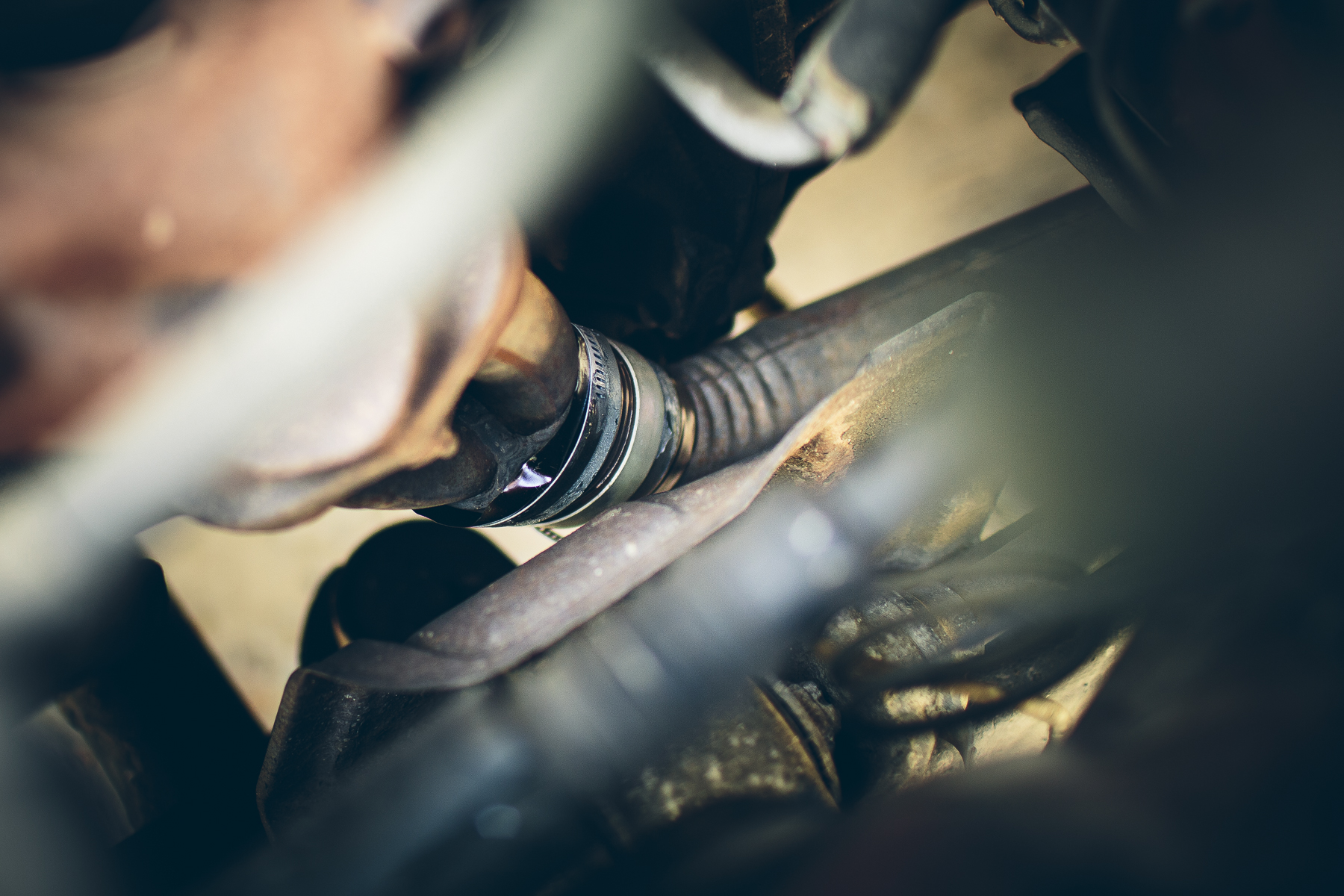
Exiting the Ecuadorian side of the border probably took 5 minutes. Piece o’ cake. We crossed the bridge to the Peruvian side, which was closed for the lunch hour until 3 pm. We waited around until the officials were ready to sort out our paperwork. What should have been an easy process turned into a an hour and a half (which is actually not bad compared to a Central American border crossing!) of us watching the border official fill out the temporary import permit by hand. And not just filling it out by hand, but filling out and saying each letter aloud as he wrote it down. I’m pretty sure that just writing out the VIN number for the truck took 10 minutes. Finally, our paperwork in order, we continued on the smooth paved roads to our first Peruvian town of San Ignacio. Our arrival was loudly announced by our exhaust pipe problem (the Canadians are here!!), and more than once a handful of Peruvian kids stood on the side of the road with both hands covering their ears and a grimace on their faces. First impressions! We camped in a gated grassy parking lot of The Grande San Ignacio Hotel, tossing and turning from the lively karaoke night, which continued well past 2:30 a.m.
Northern Peru offered up some of the most spectacular and ever-changing scenery of the trip. We were dazzled as we passed multi-leved bright green rice fields, canyons, steel grey rivers, and large mud bricks laying out to dry in the sun. We felt a bit confused as to where in the world we were as the scenery reminded us so much of South East Asia. Korea Motors tuk tuks (called moto-taxis here in South America) dotted the roadways and there were Chinese food restaurants around every corner. In Jaen we attempted to find someone to fix our exhaust pipe, but had no luck other than the mechanic who offered to handcraft one from scratch for us with some steel water pipe… umm, thanks, but no thanks. As soon as we crossed into Peru, Toyotas littered the streets. Old Hiluxes were everywhere, so we figured we could find the parts somewhere else.
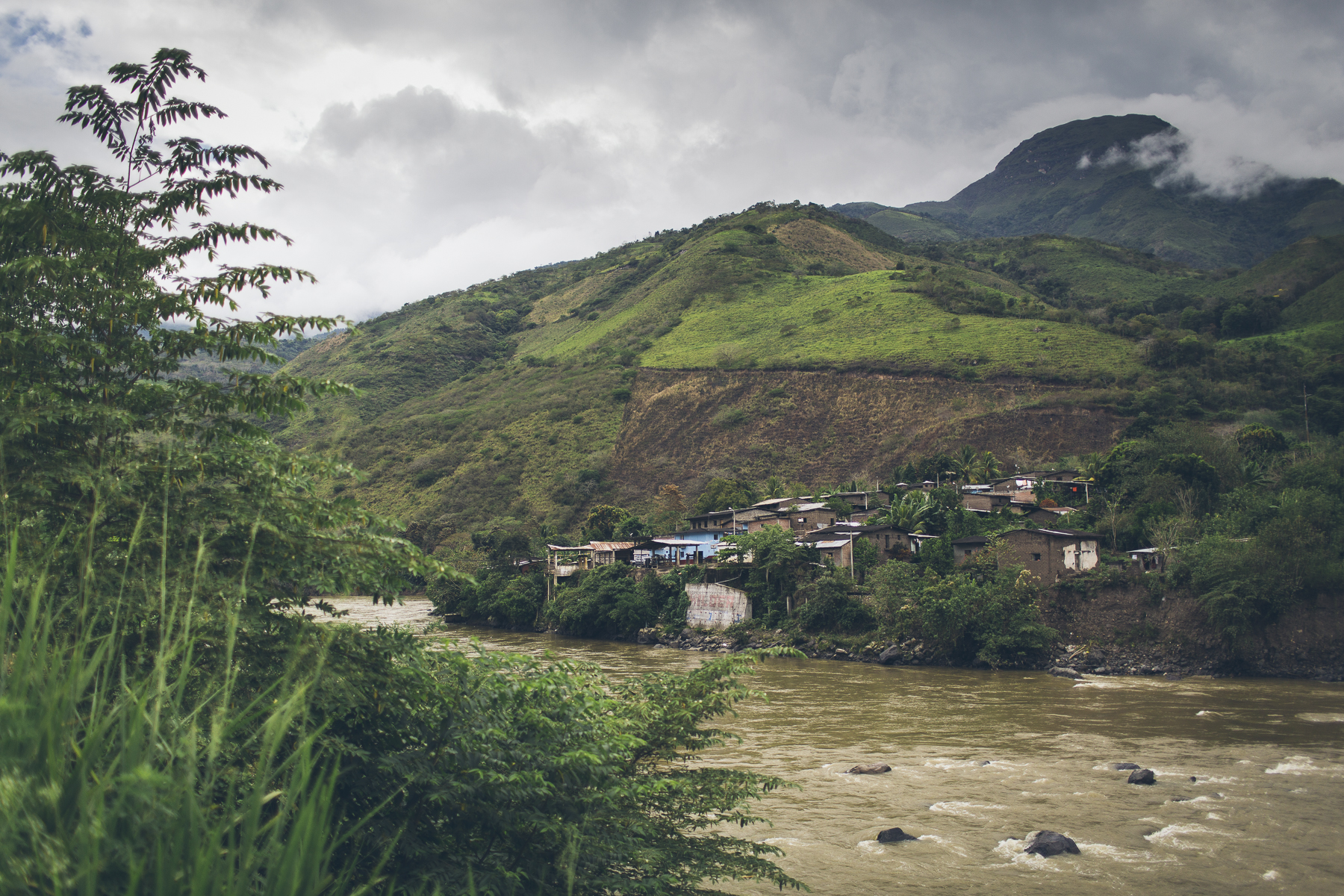
In the meantime we set off to explore, and kept busy with all of the sights and scenery that Northern Peru had to offer.
Gocta Falls
We hiked with the crew from Our Road Life to the Gocta Waterfall. The existence of this waterfall was made known to the rest of the world by a German fellow in 2005. He was on an archeological expedition with a group of Peruvian explorers when they came upon the falls. At one time the falls were deemed as being the third highest on the planet but apparently this measurement has been highly disputed. Whatever, man. The waterfall is tall. Like, crane-your-neck and can’t-capture-the-whole-thing-on-film tall.


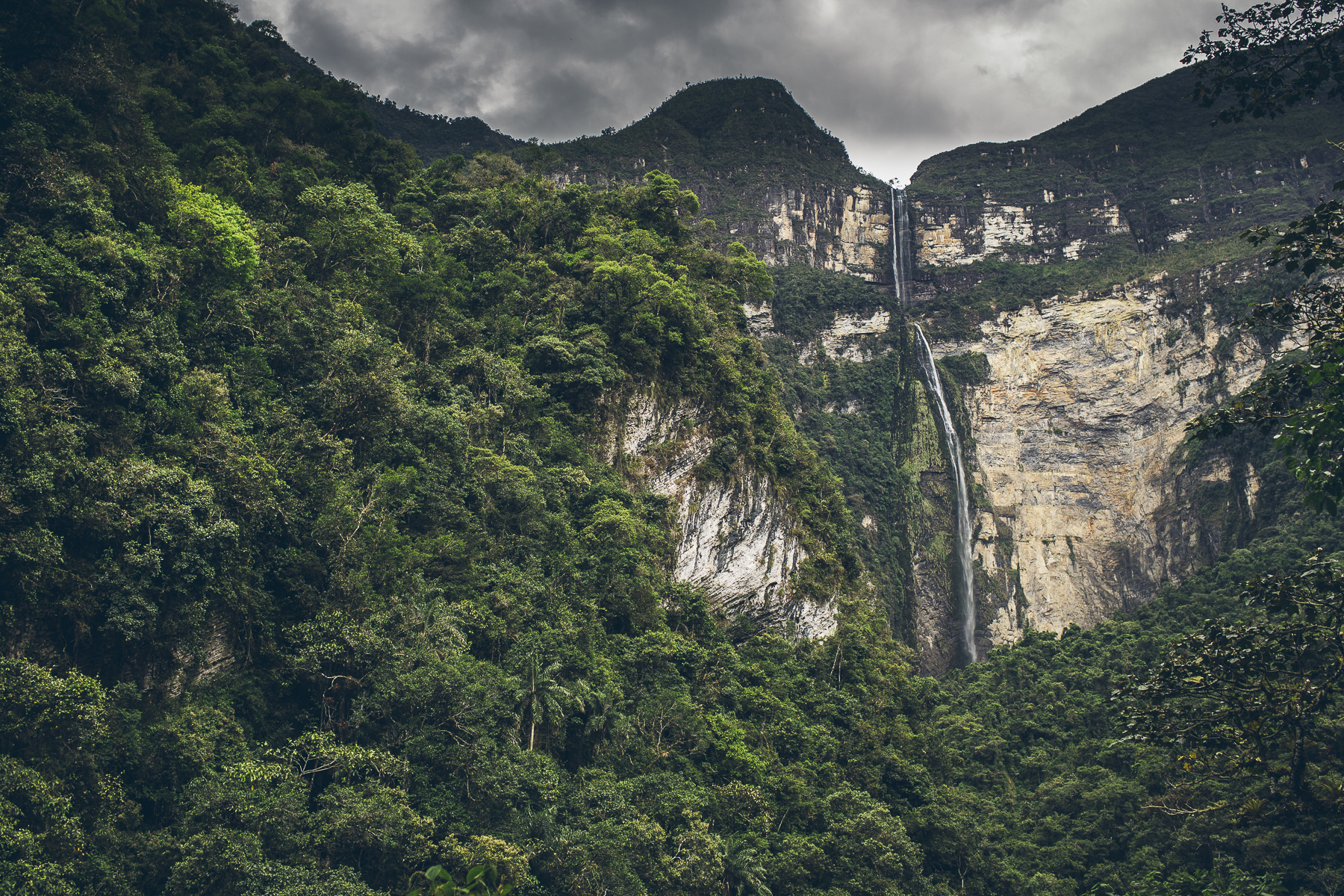
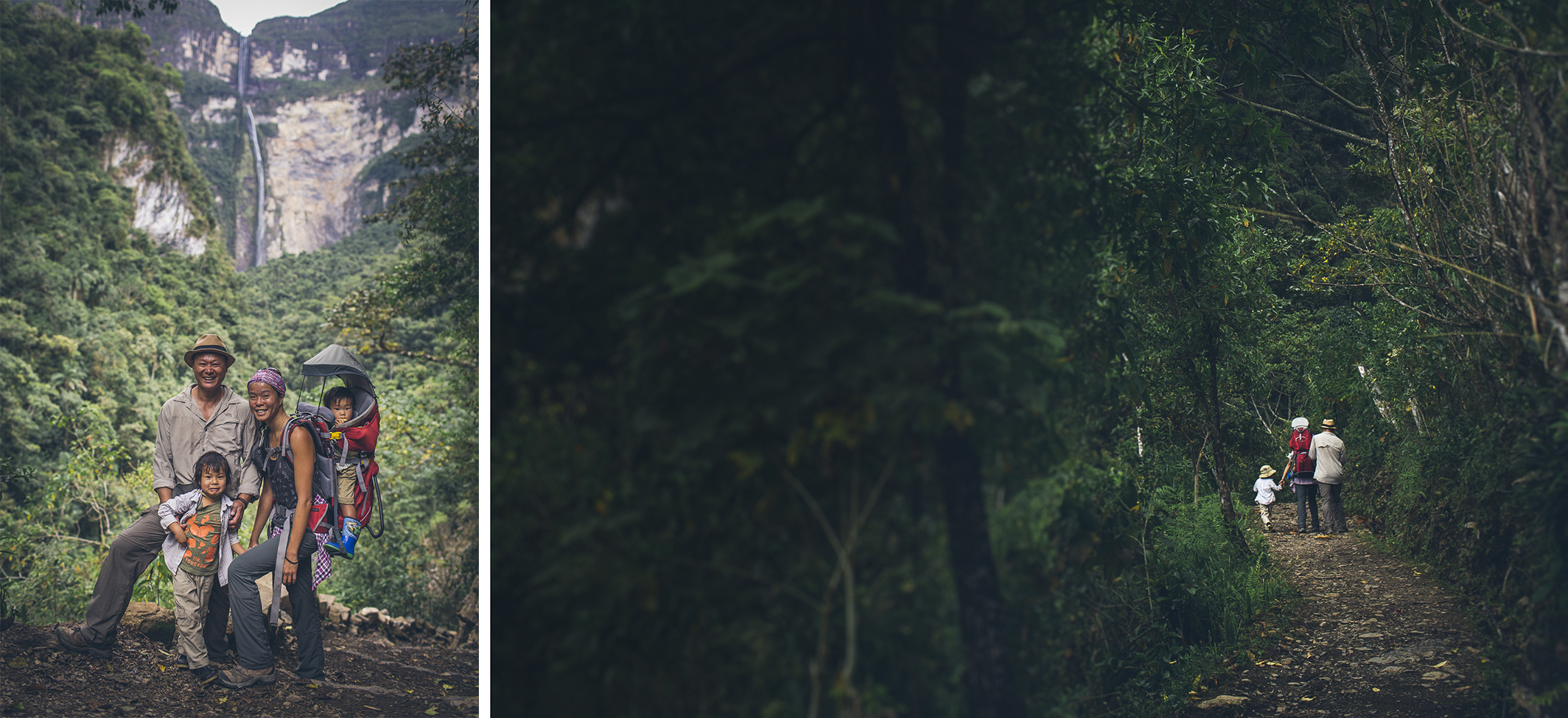


Chachapoyas
We stopped off in the pleasant town of Chachapoyas for a couple of days where we did routine things such as stocking up on groceries, wandering through the streets, and having potlucks with Simon, Karie, Ty and Jamie. It was time to get organized before embarking on some more dirt-road driving.
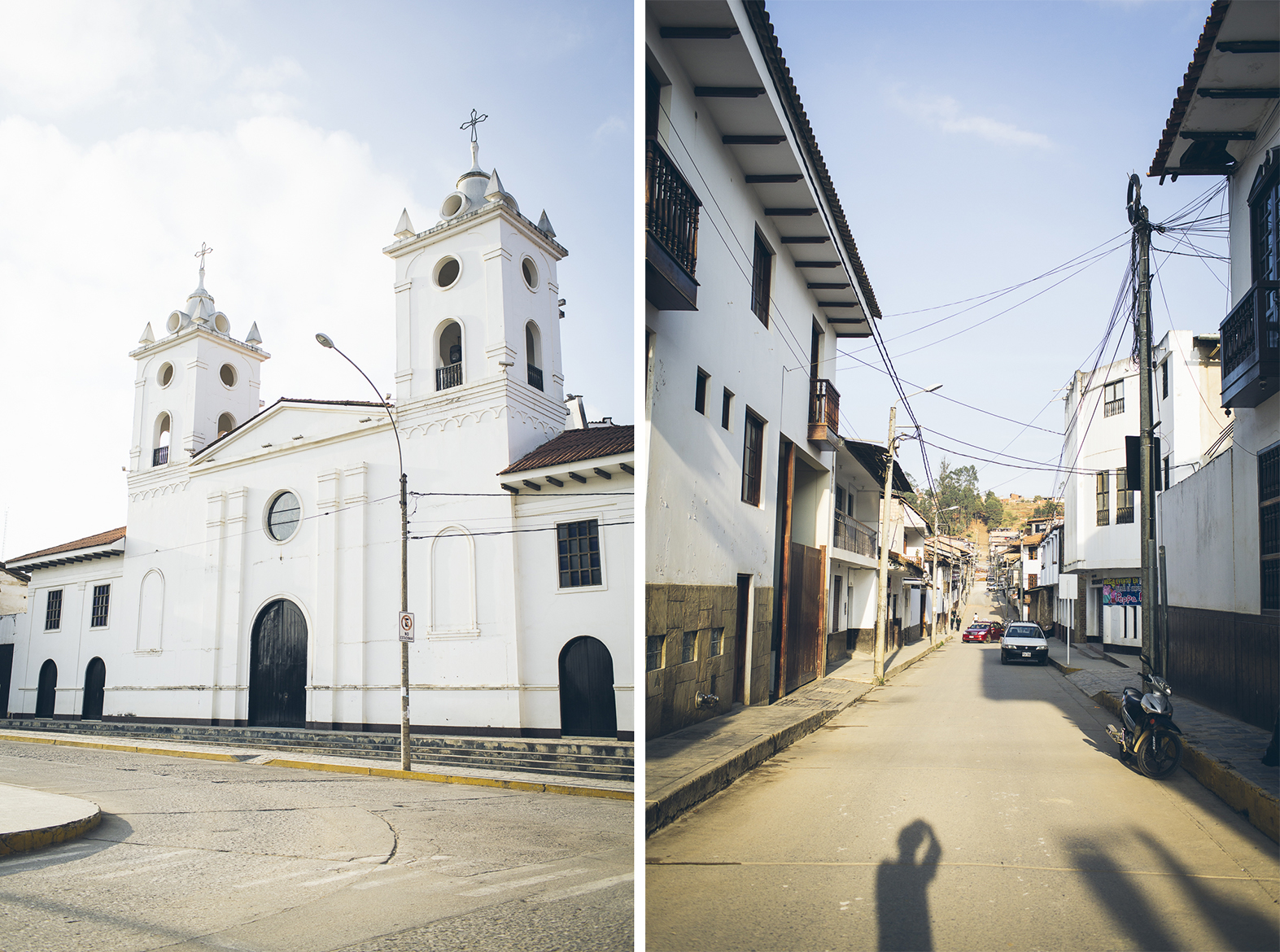

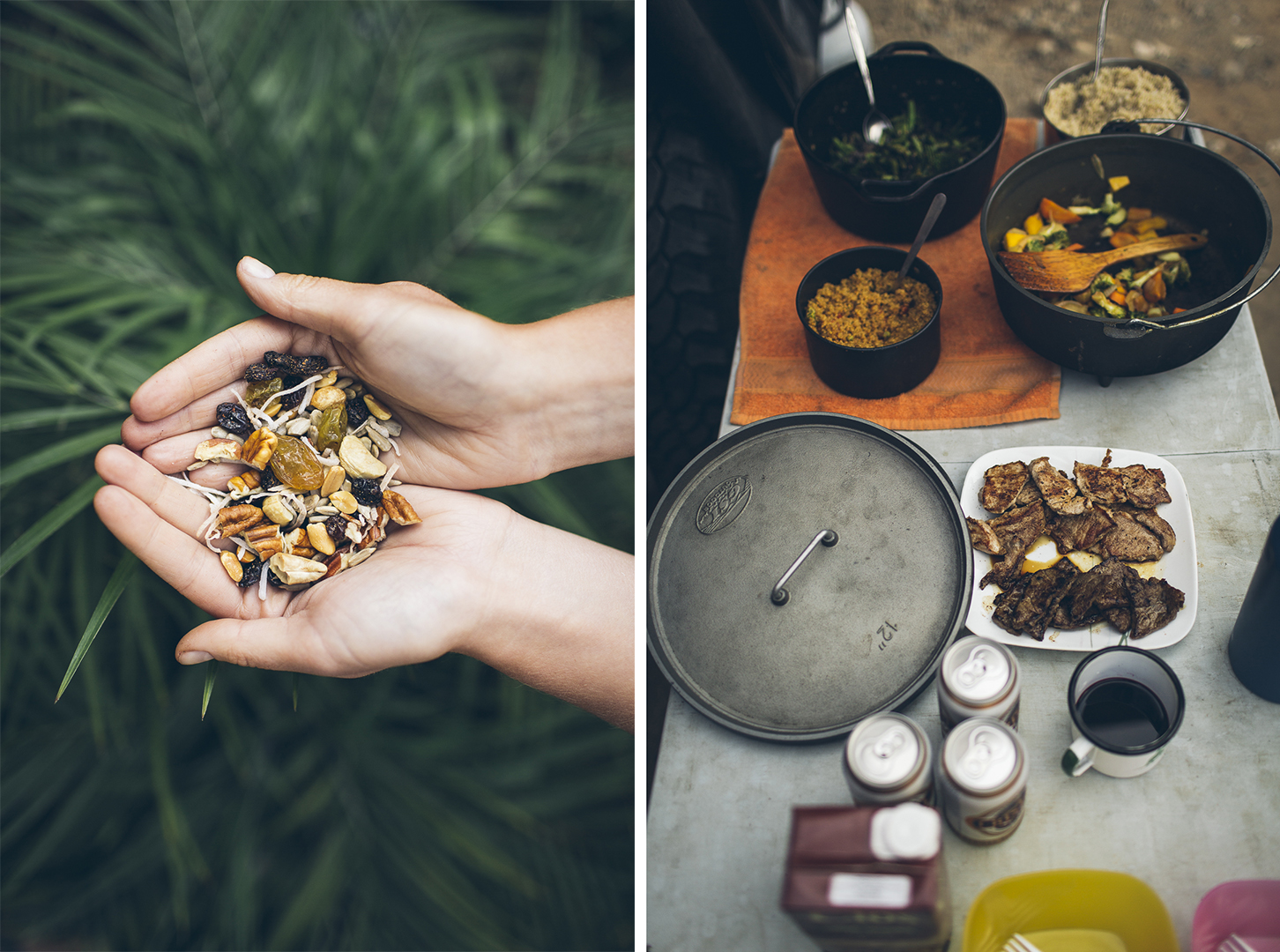

Pueblo de los Muertos
After picking up the key to a gate behind which lies the Village of the Dead (a.k.a. Pueblo de los Muertos), we set off to wander through the remains of the Chachapoya people on their cliffside collection of stone tombs. These tombs were crafted between 1100 A.D. and 1350 A.D. and as such they have succumbed to looters and weathering of the adobe walls over time. We did our best to keep our bodies from turning into remains at the bottom of the steep cliffside.

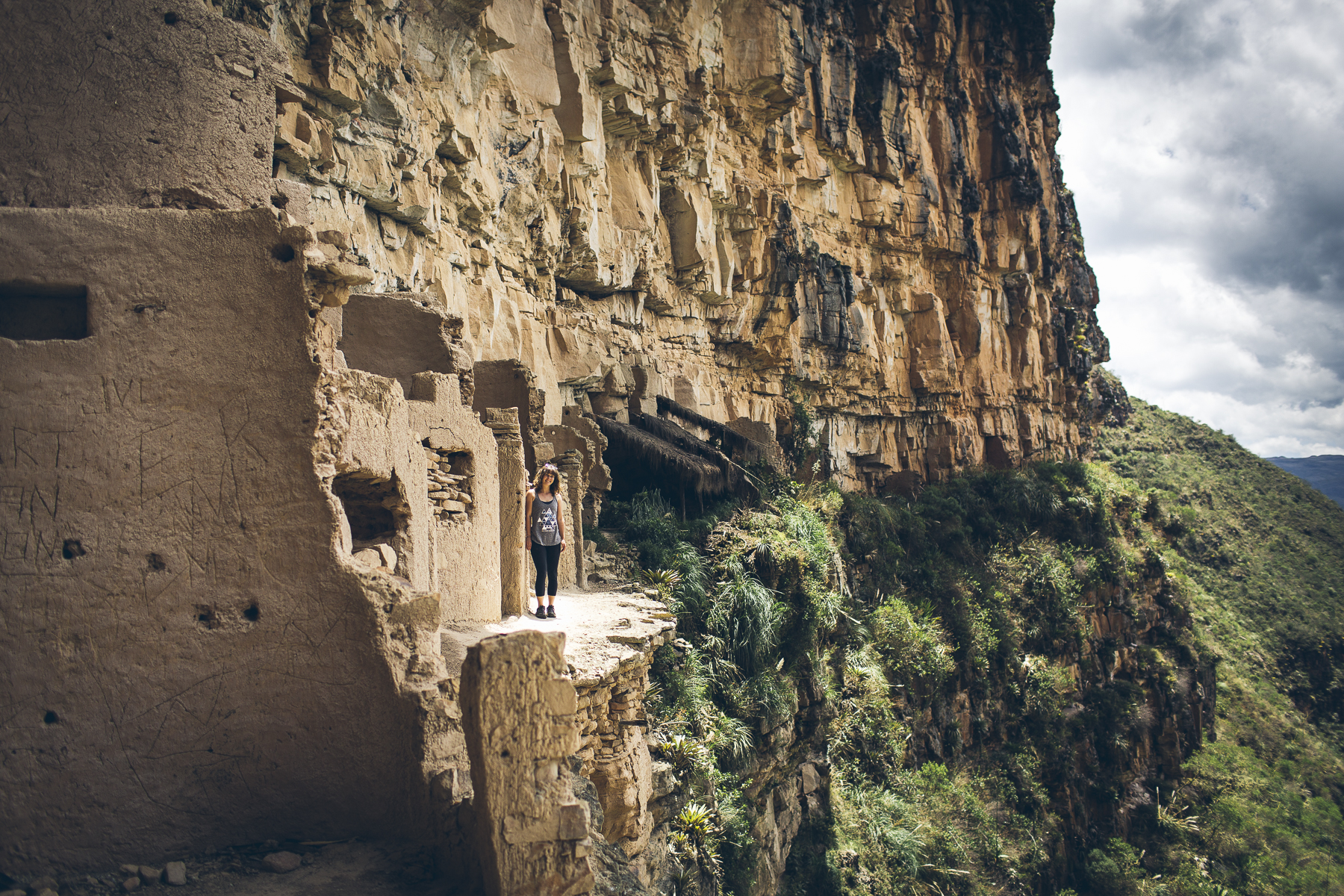
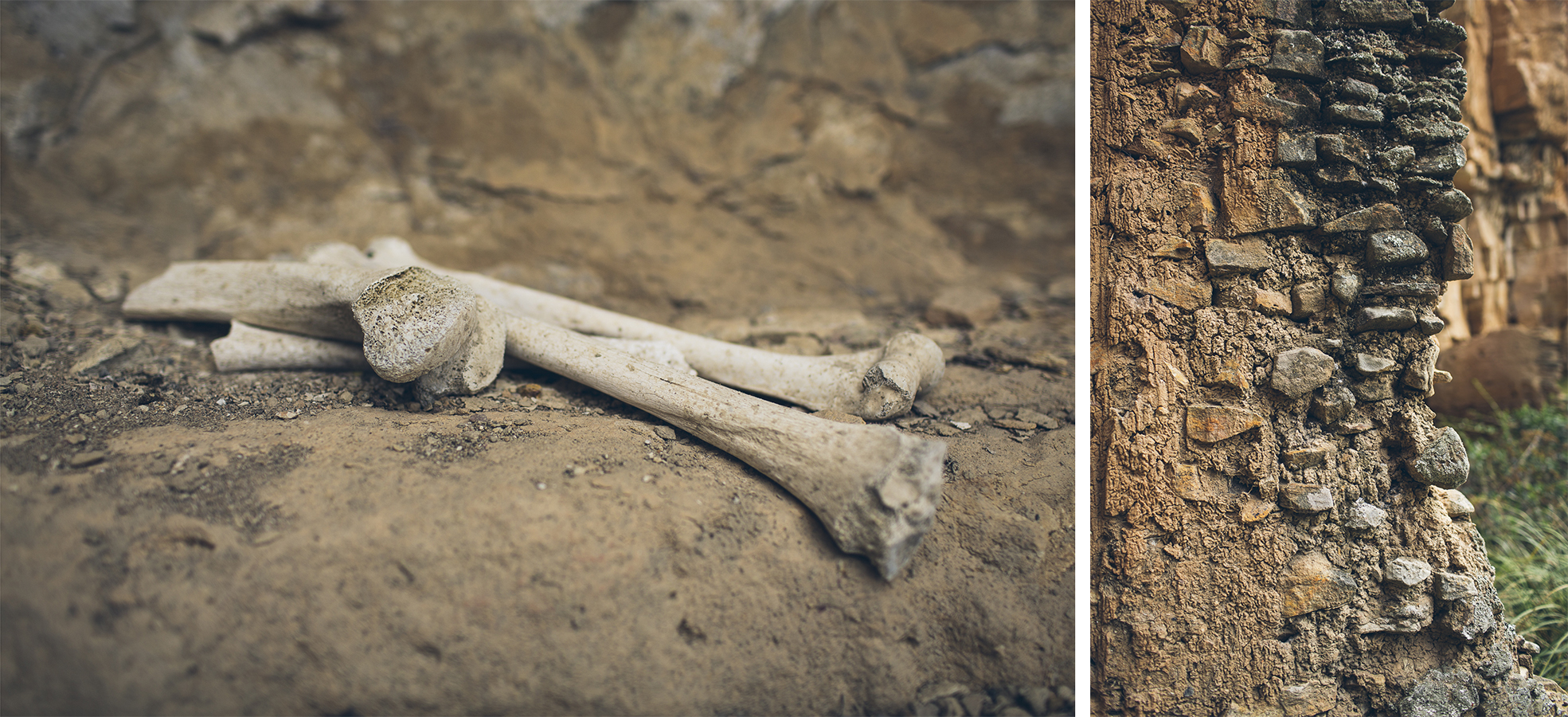
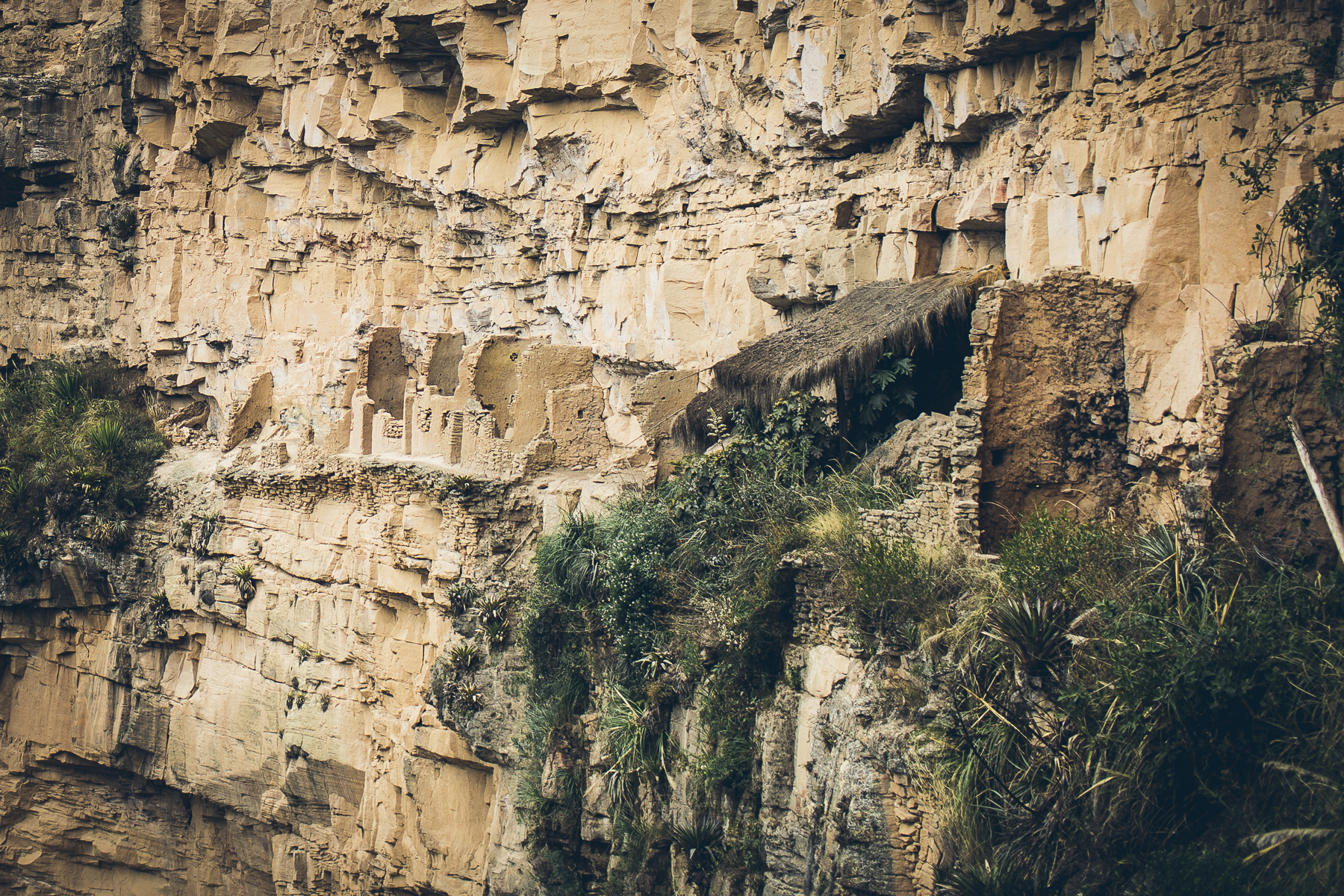
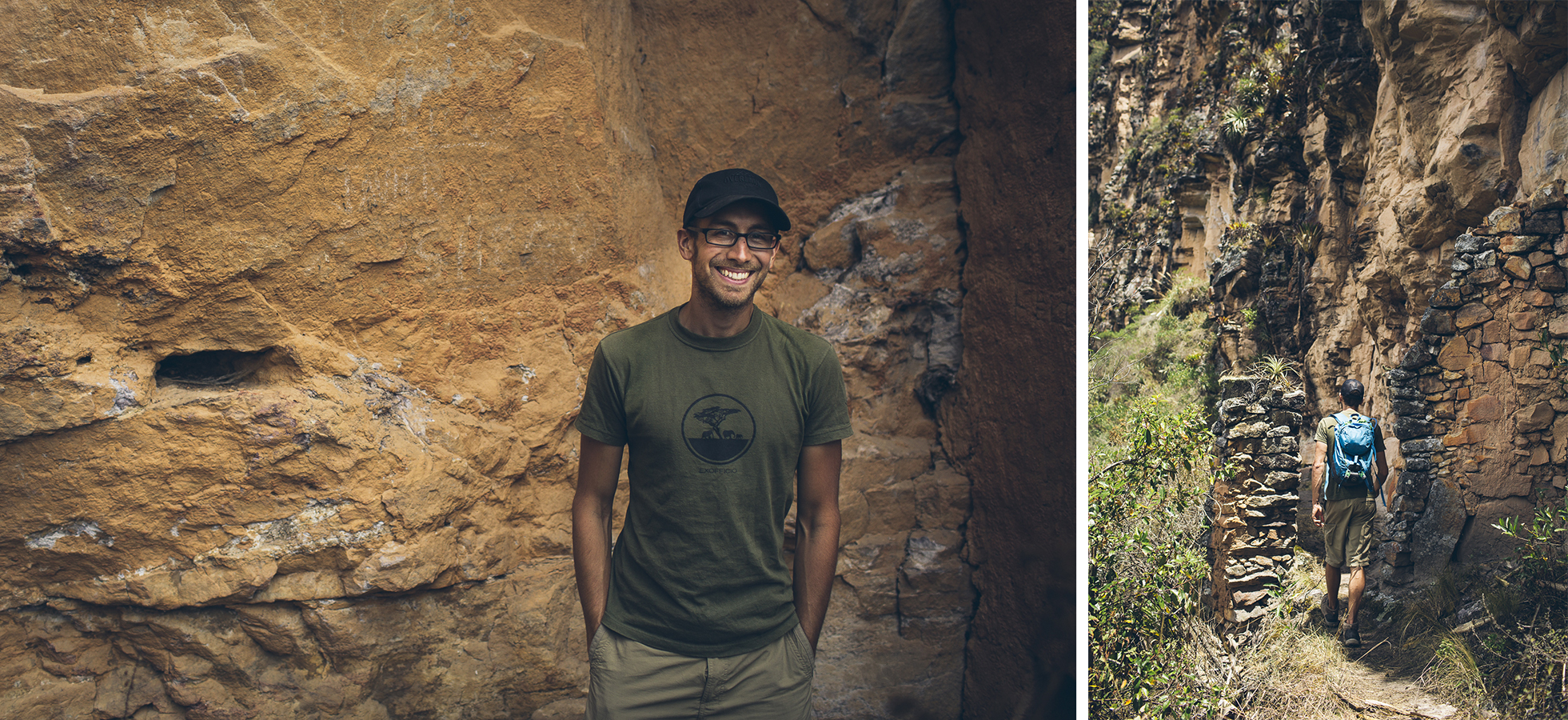
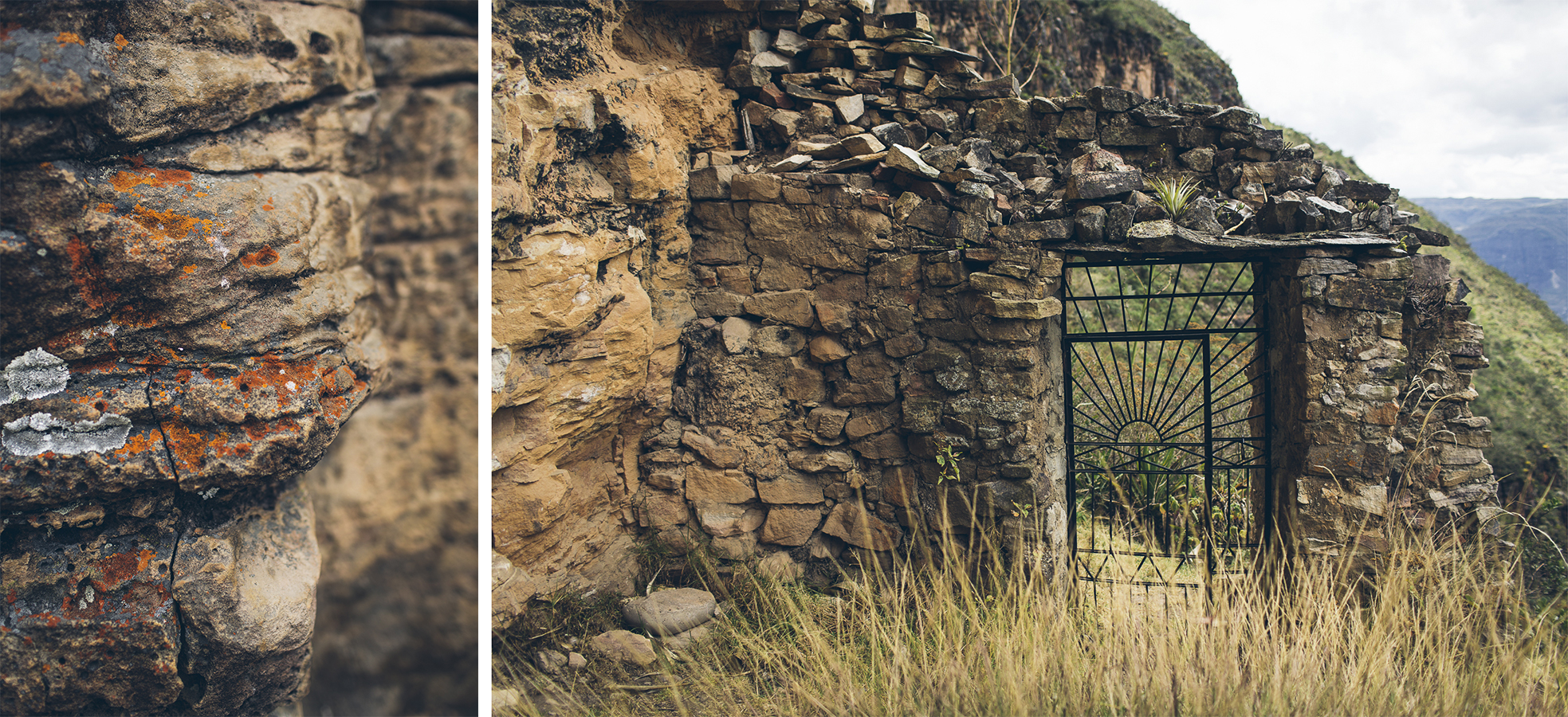
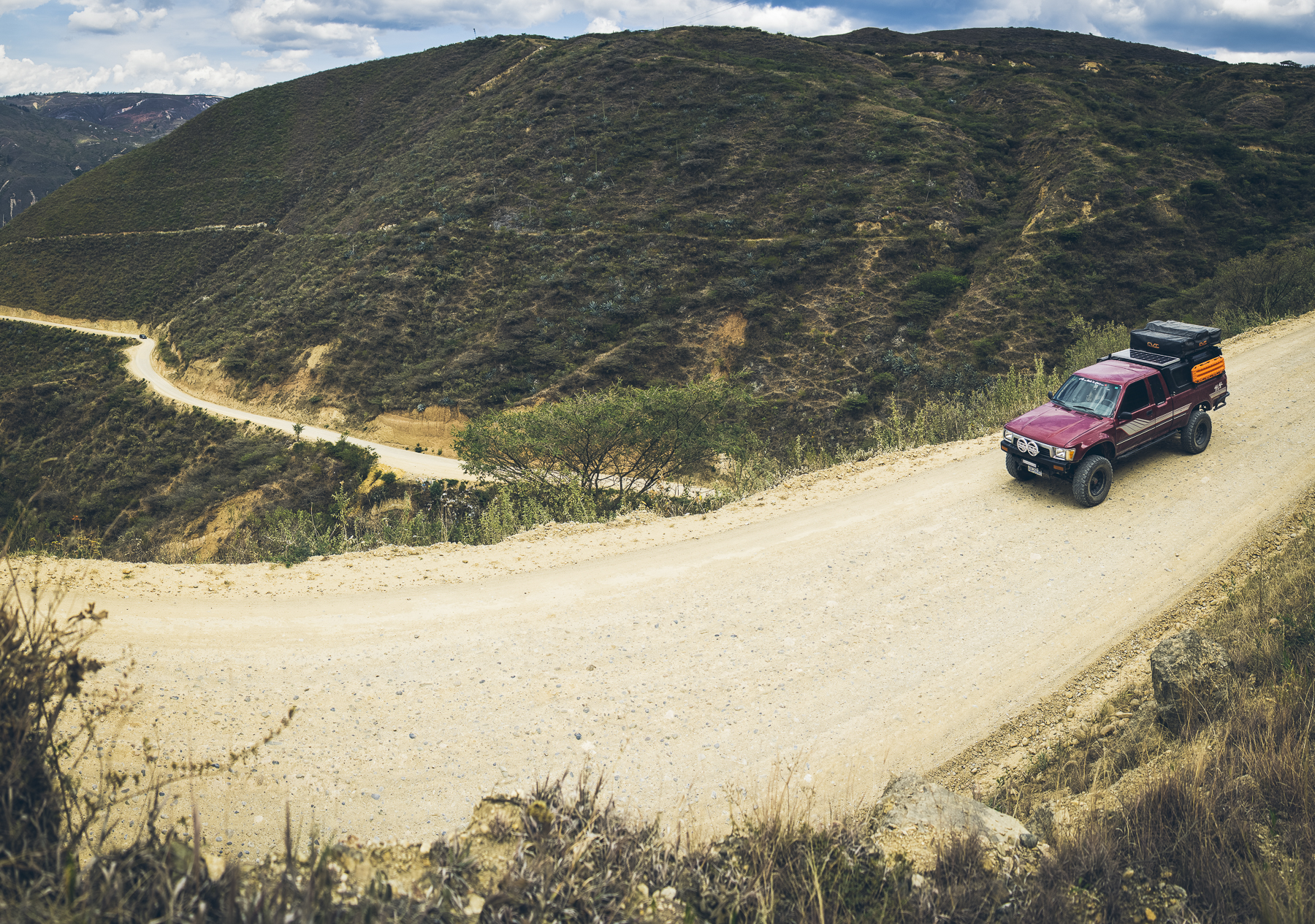
Kuelap
Apparently the Chachapoyas people were quite busy as they also constructed the fortress of Kuelap, a walled city with more than four hundred buildings inside. We understood their location choice as the views from the ruins were incredible: lush countryside and mountain views, anyone? As Northern Peru hasn’t had the massive influx of tourism that the south has, we sauntered casually through the ruins by ourselves for a couple of hours. It helped that we were the first ones to enter the ruins as we were camping in the parking lot. Score!
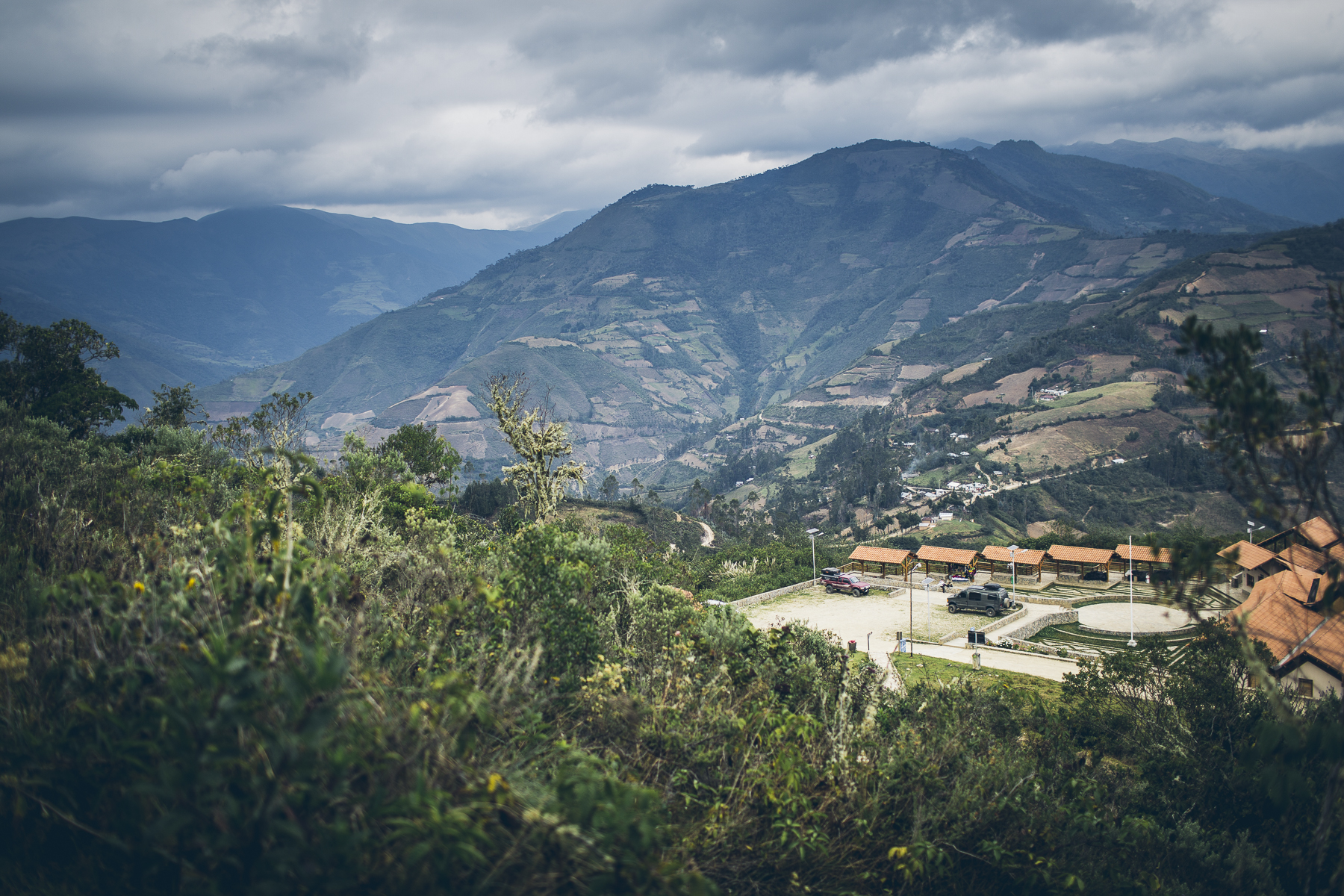
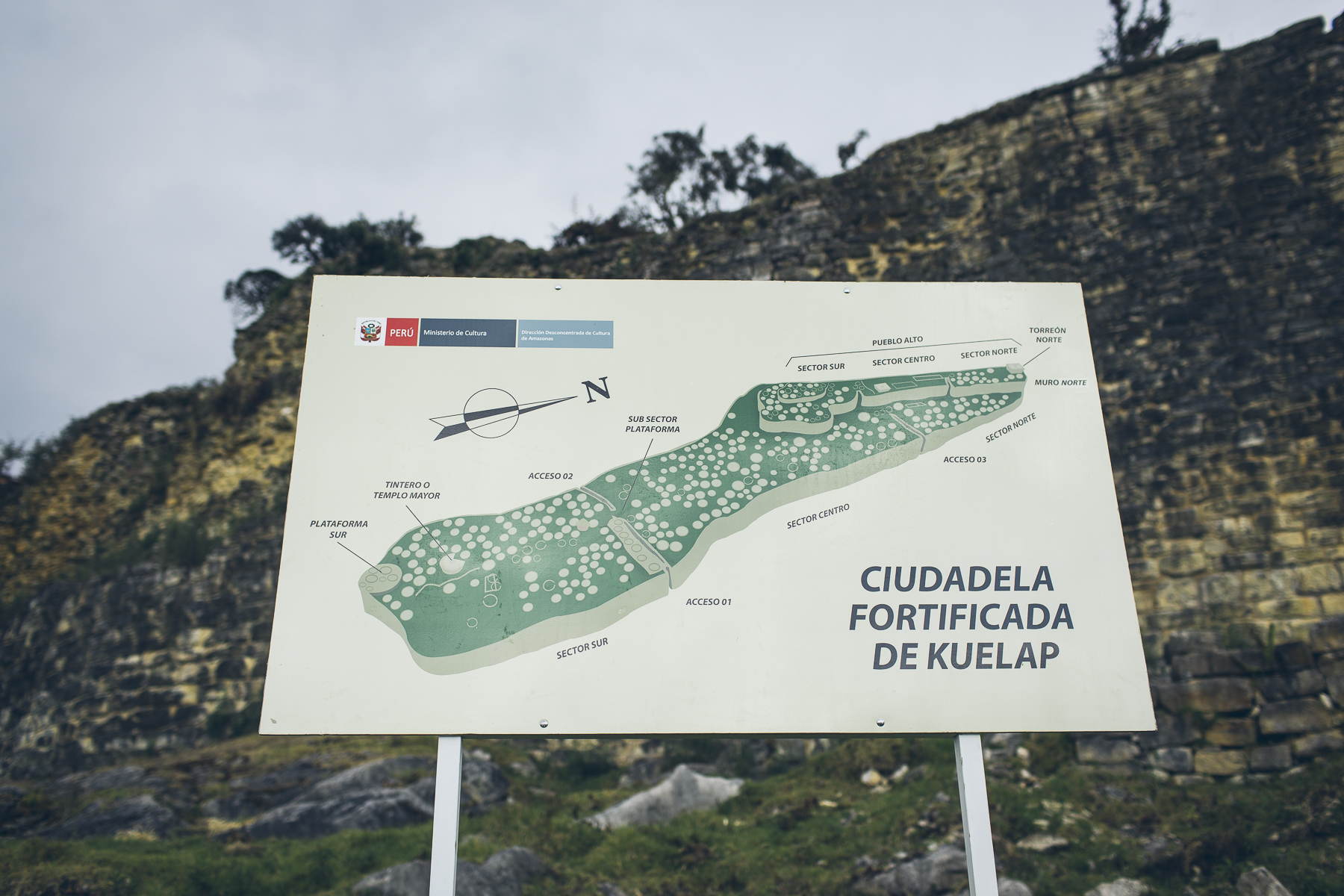
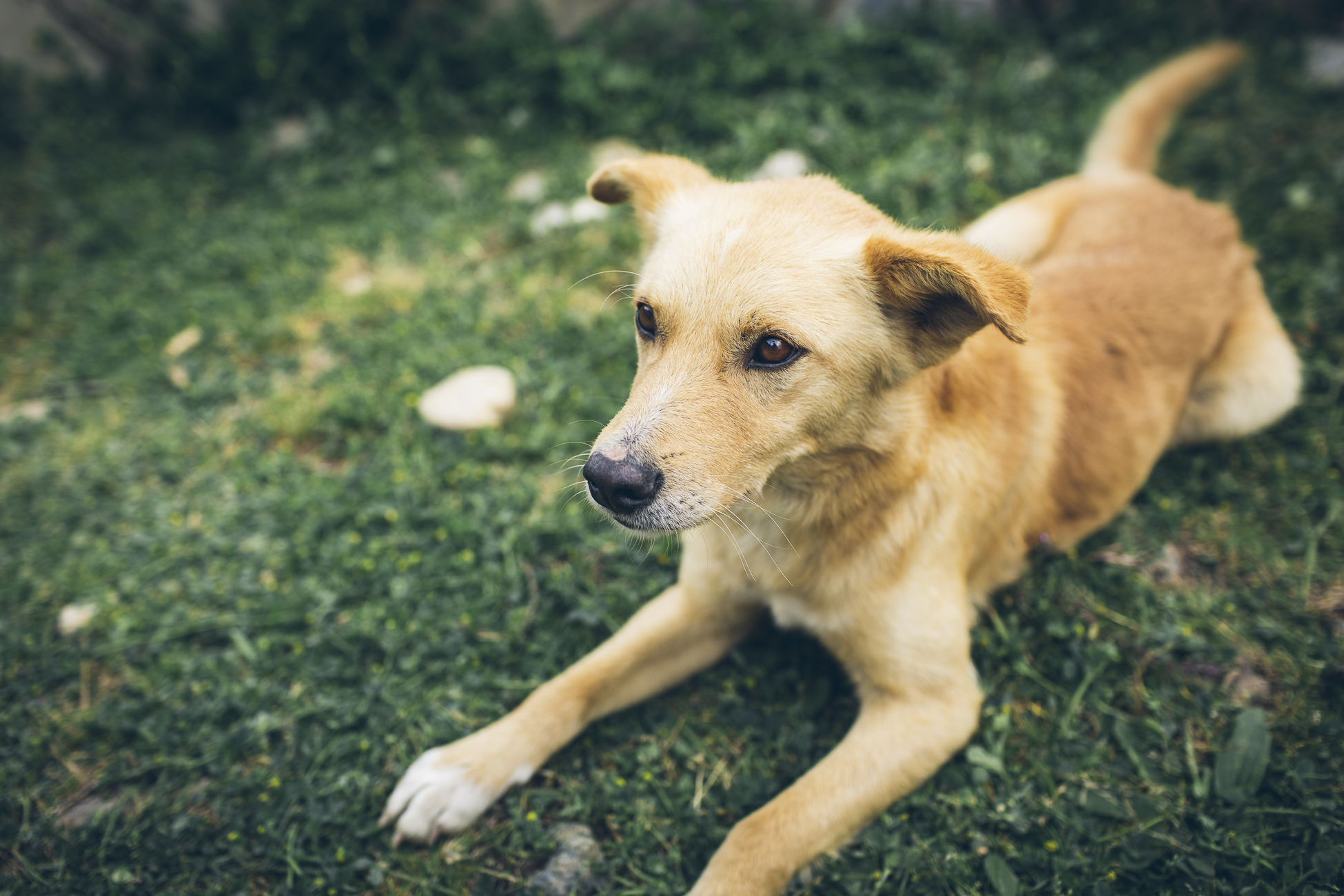
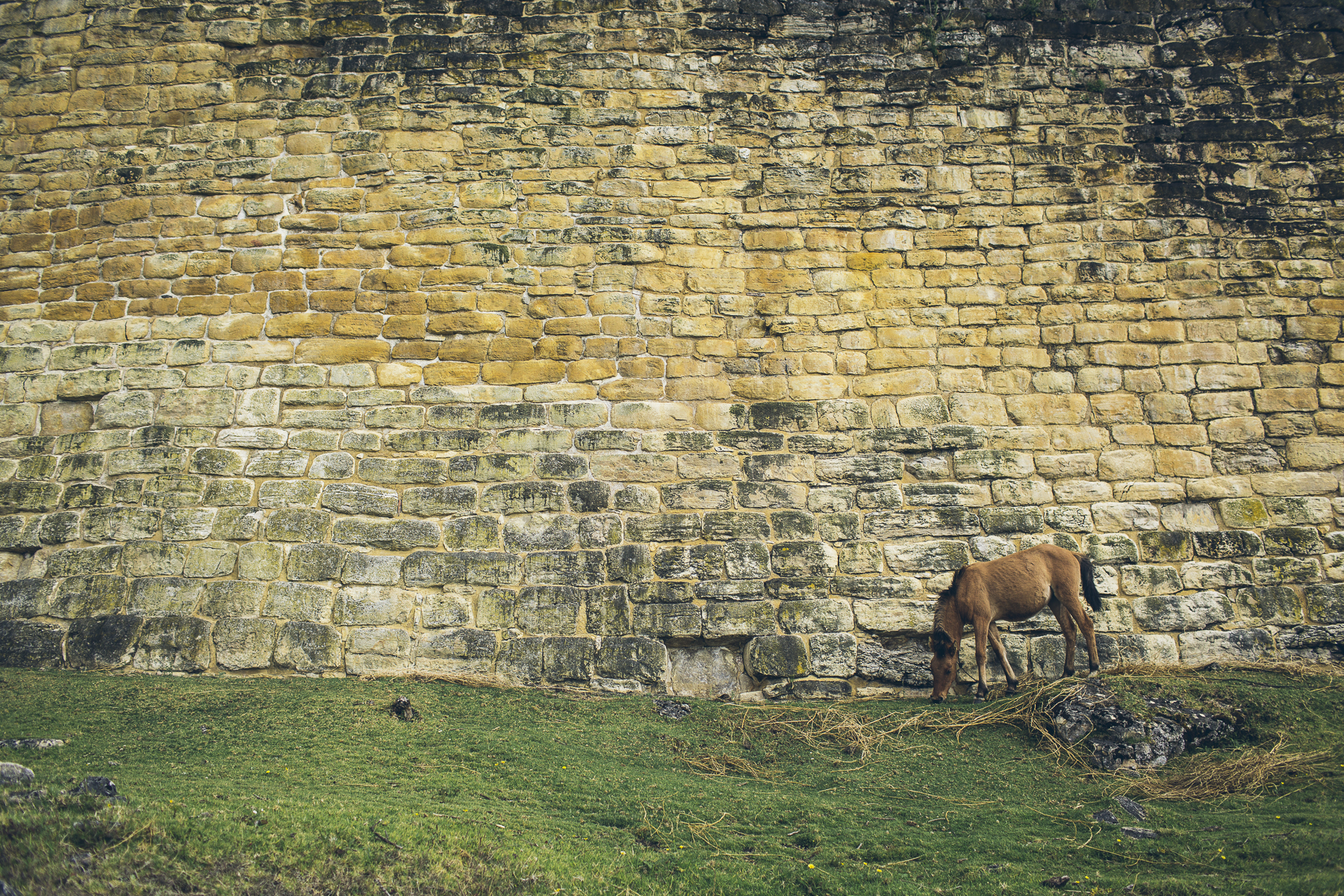
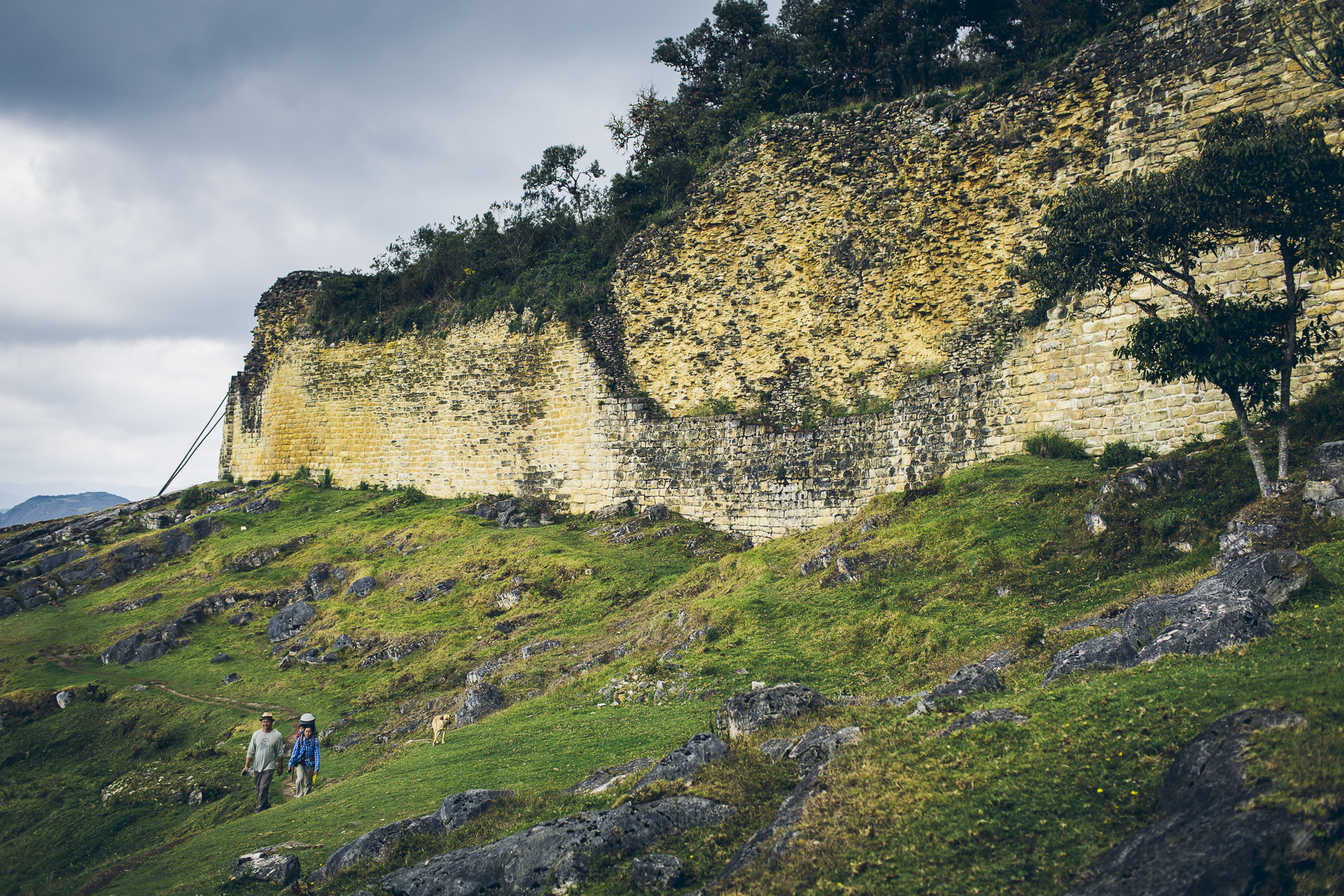
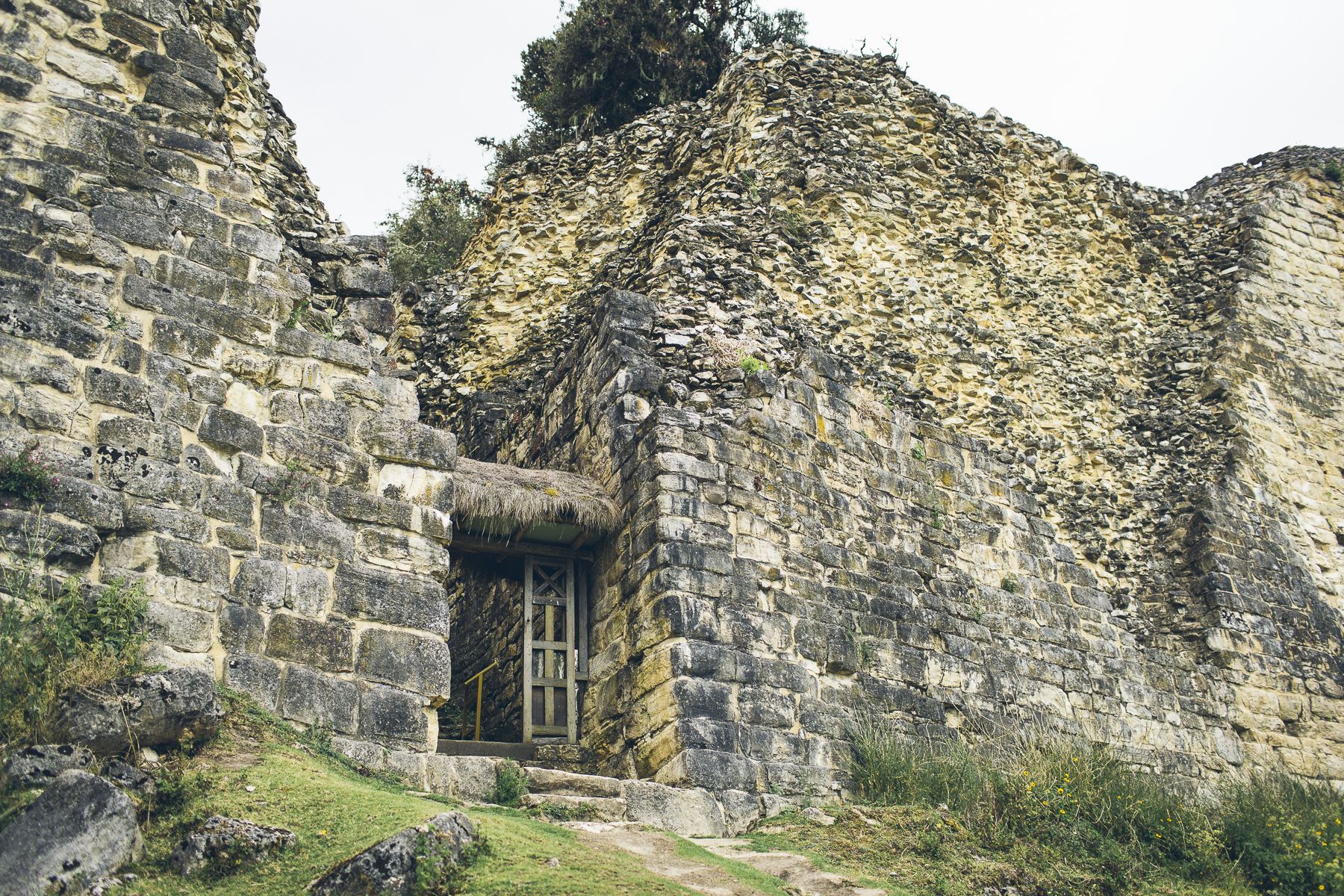
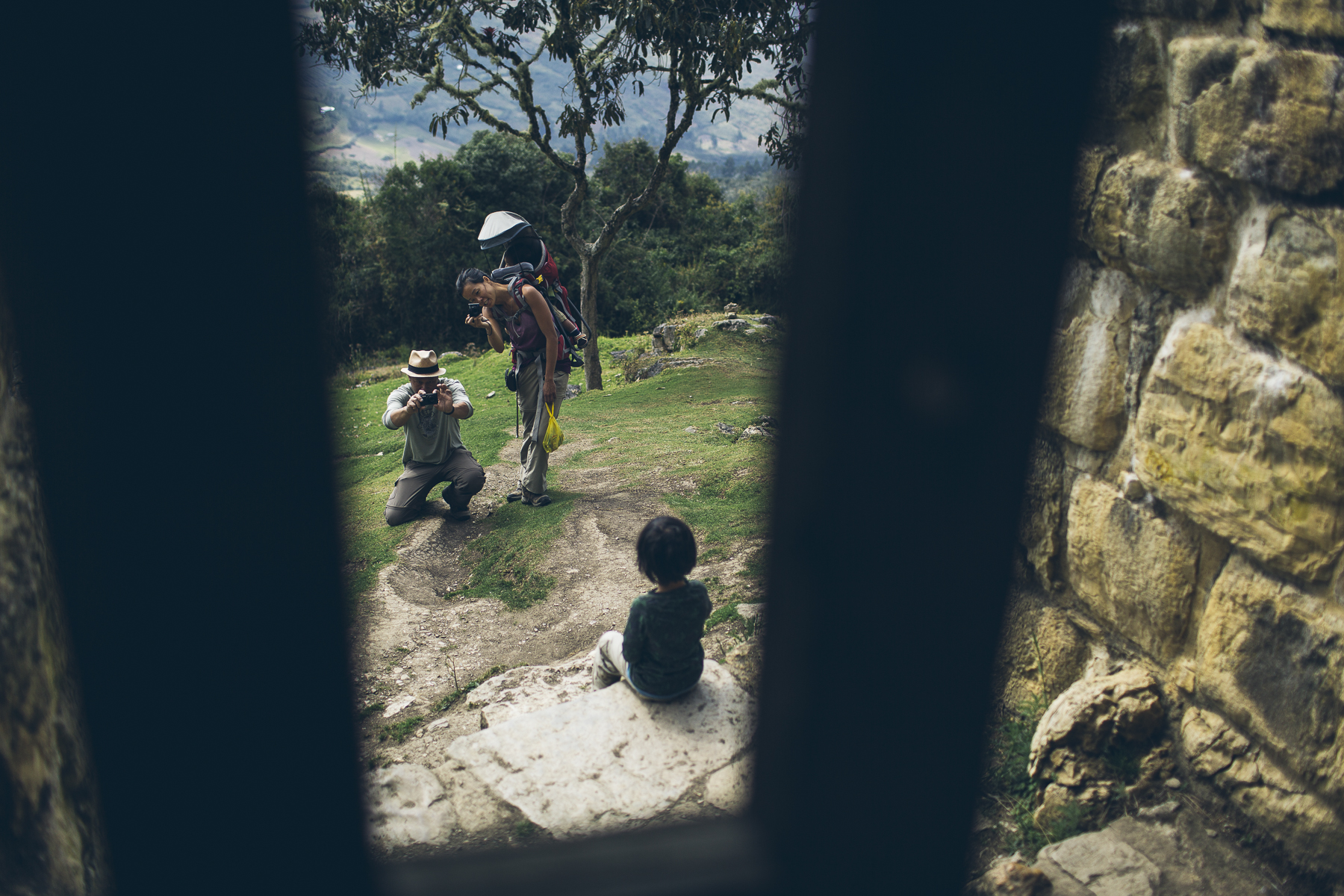

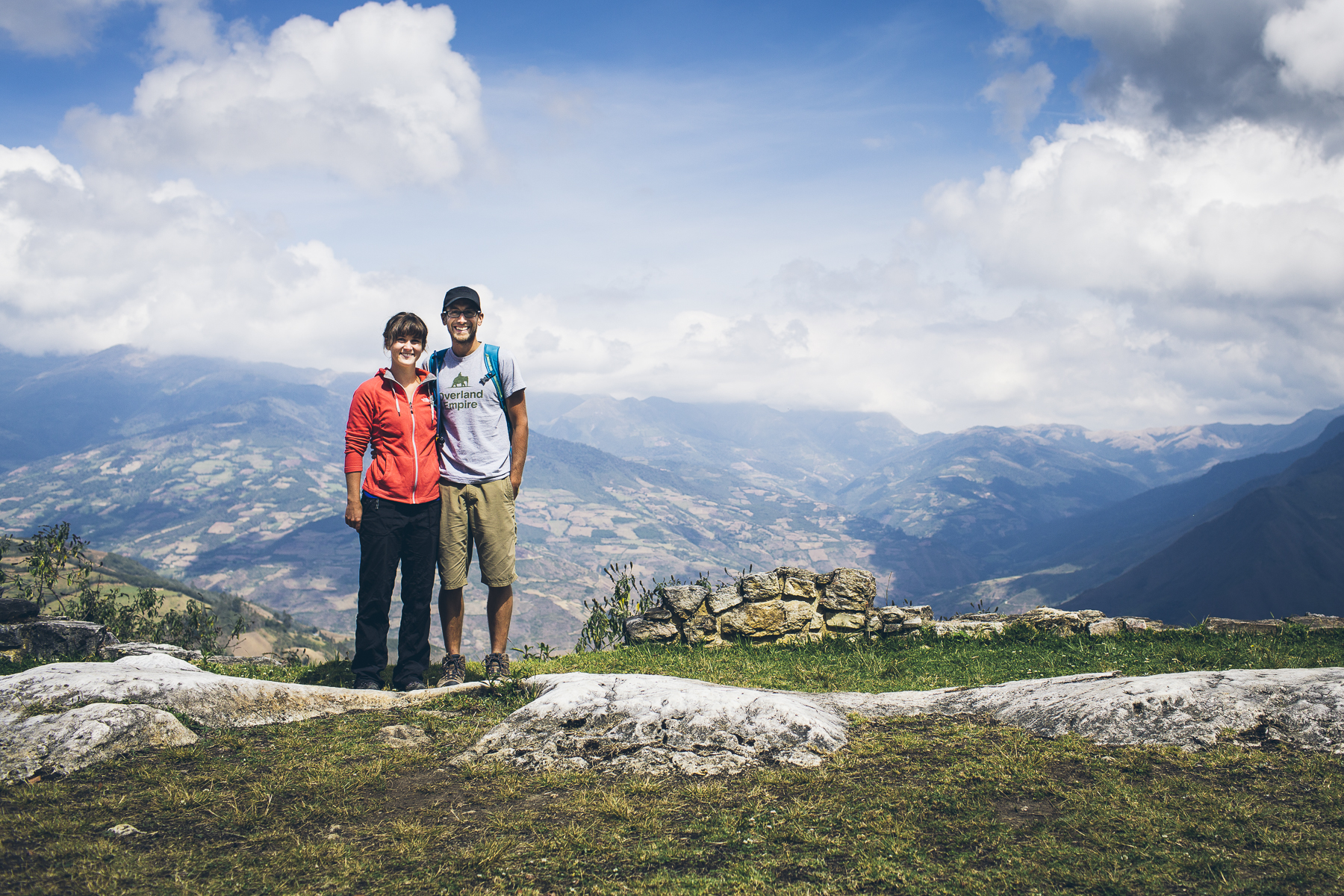
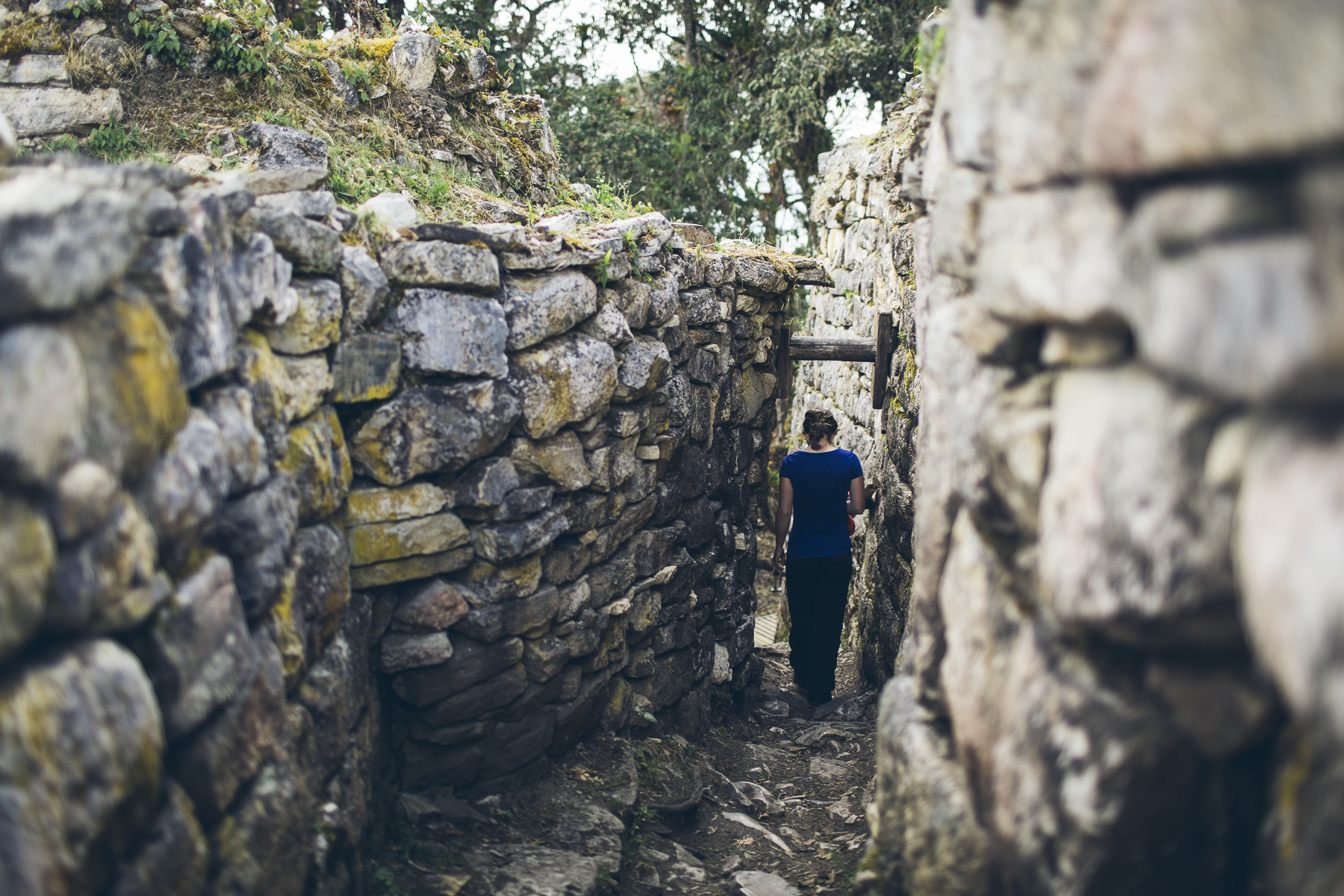
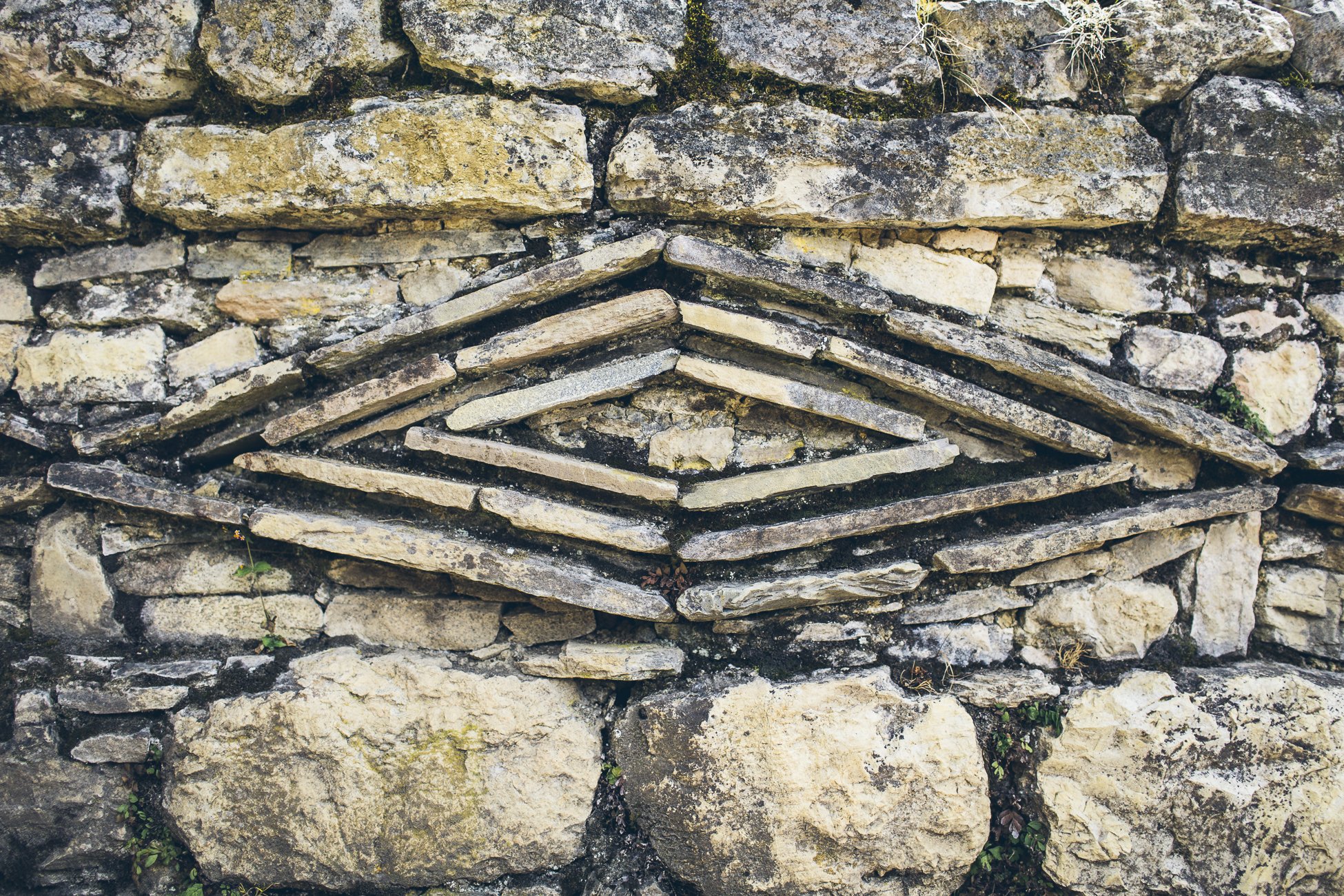
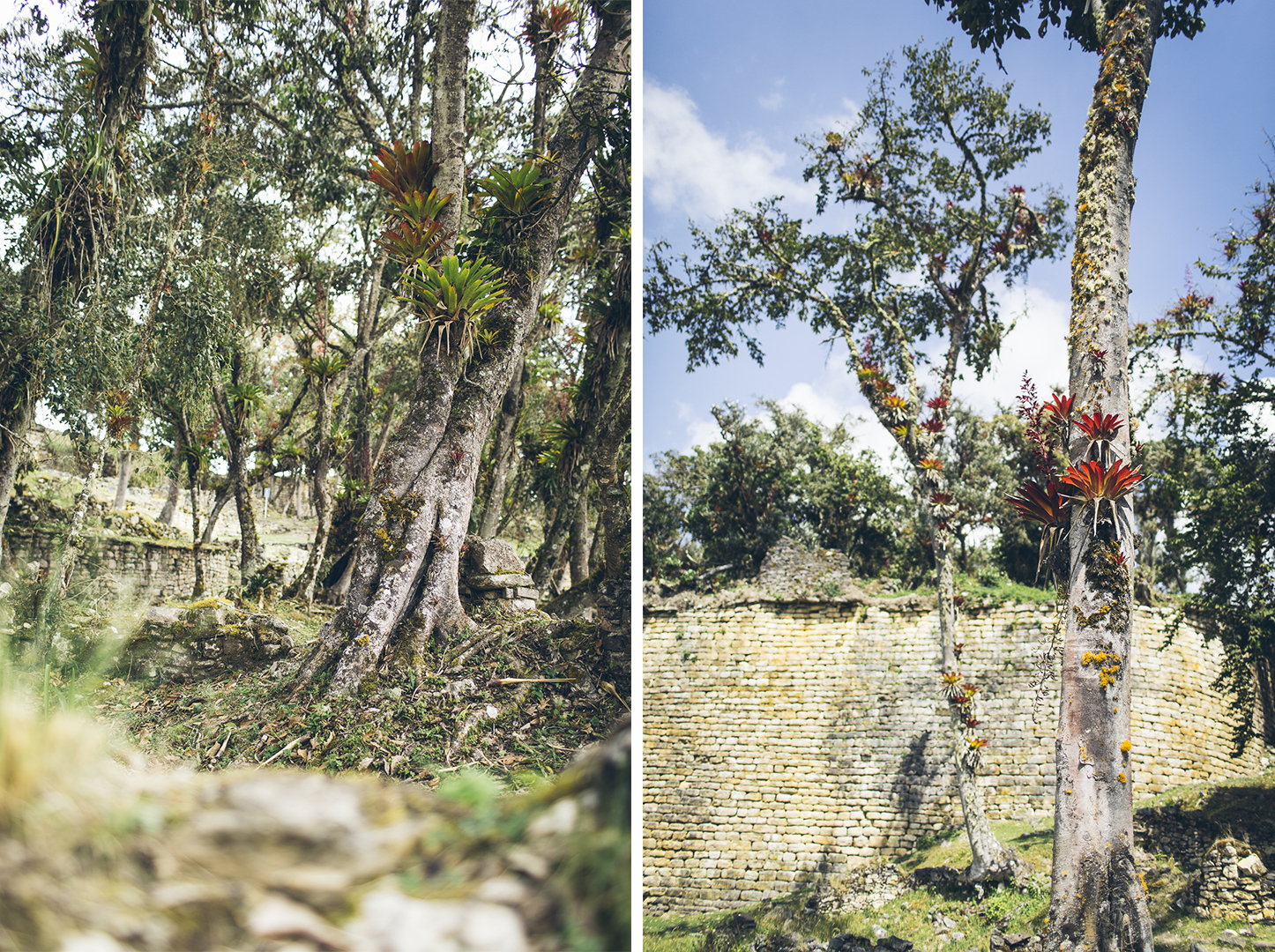
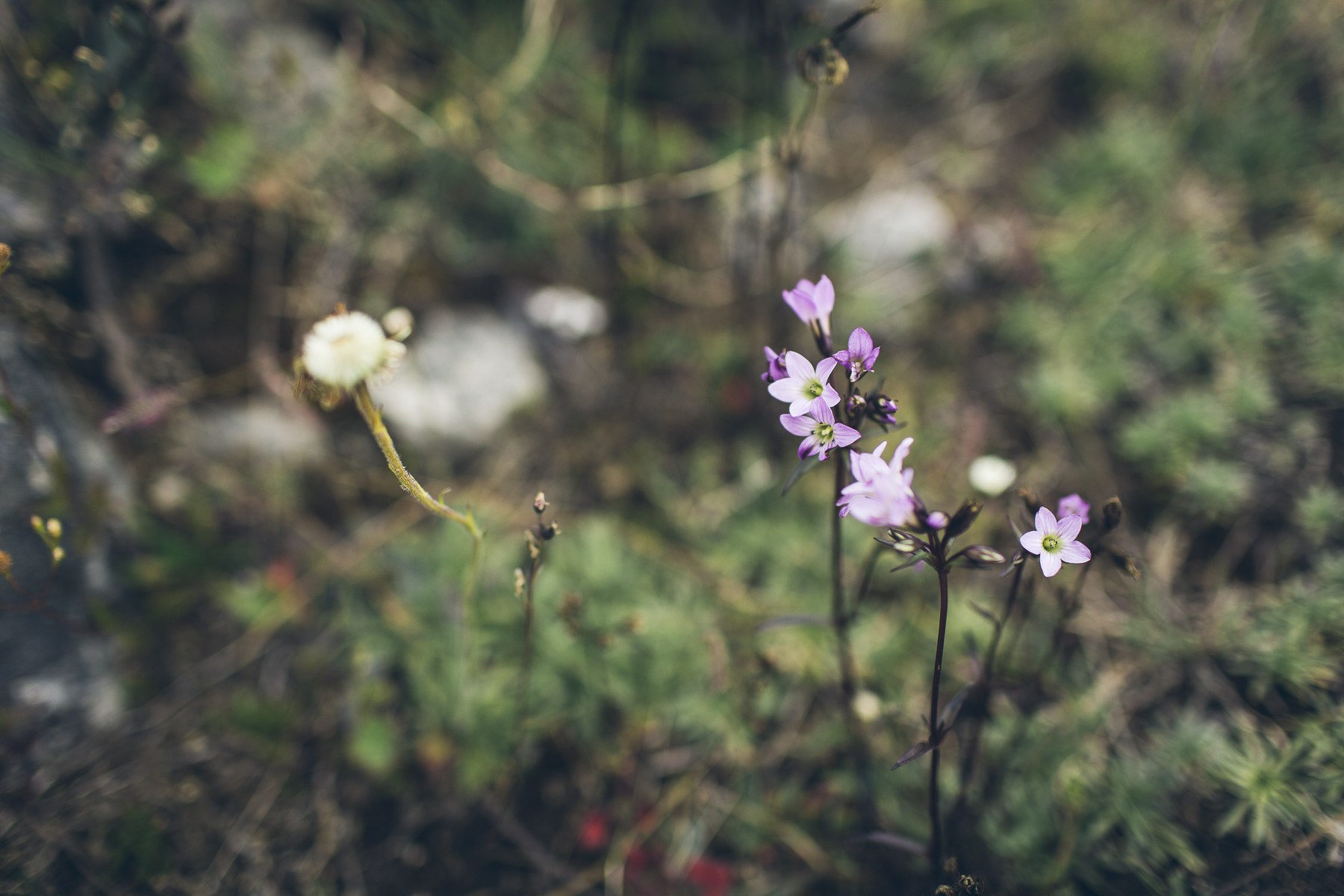




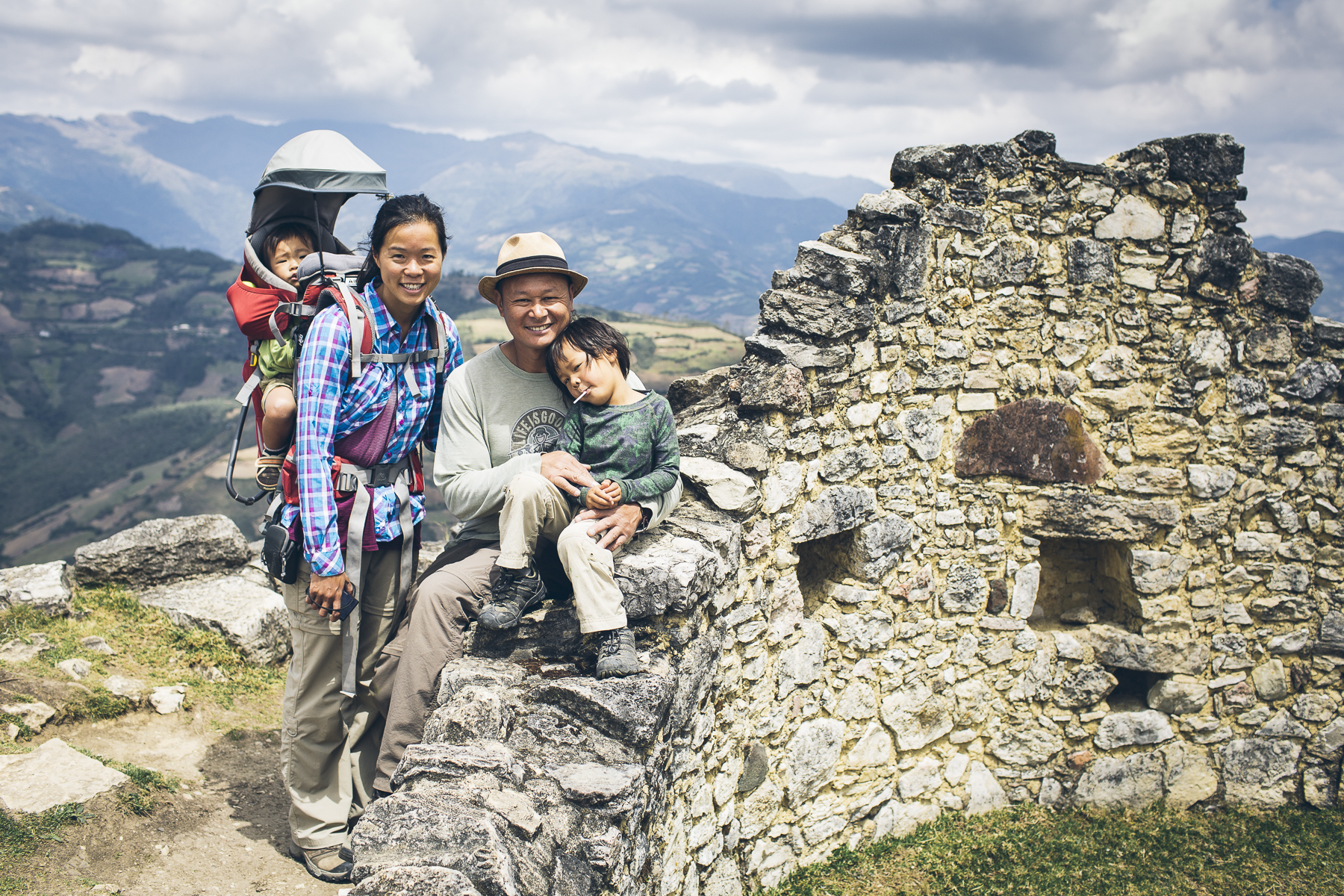
Dos de Mayo
On our way to Celendin we didn’t find many camping options that we liked. Weird town plazas and eerily vacant hostels aren’t our deal. In the end we stopped in the small village of Dos de Mayo at their futbol (soccer, for you North Americans) field. We spoke to a pair of older ladies who were watching the kids play on the grass and asked if it would be okay if we camped there for the night. Without hesitation they said, “Of course!” and it didn’t take long for a little crowd to gather… first to watch us cook dinner (which was a little awkward…) and then for an impromptu volleyball game. The entire community was extremely welcoming and even dropped off a couple of bags of potatoes as a gift before we left in the morning. We have been welcomed with open arms in Peru.
We chatted with a local man who explained to us that this small village was recently formed by a group of families who left the Cajamarca area. They chose Dos de Mayo because of its fresh water supply as the water in Cajamarca became contaminated by the Yanacocha gold mine. Here they have a small community where everyone gathers around the futbol field to play, chase the dogs, knit, watch the kids, and apparently play volleyball with gringos.

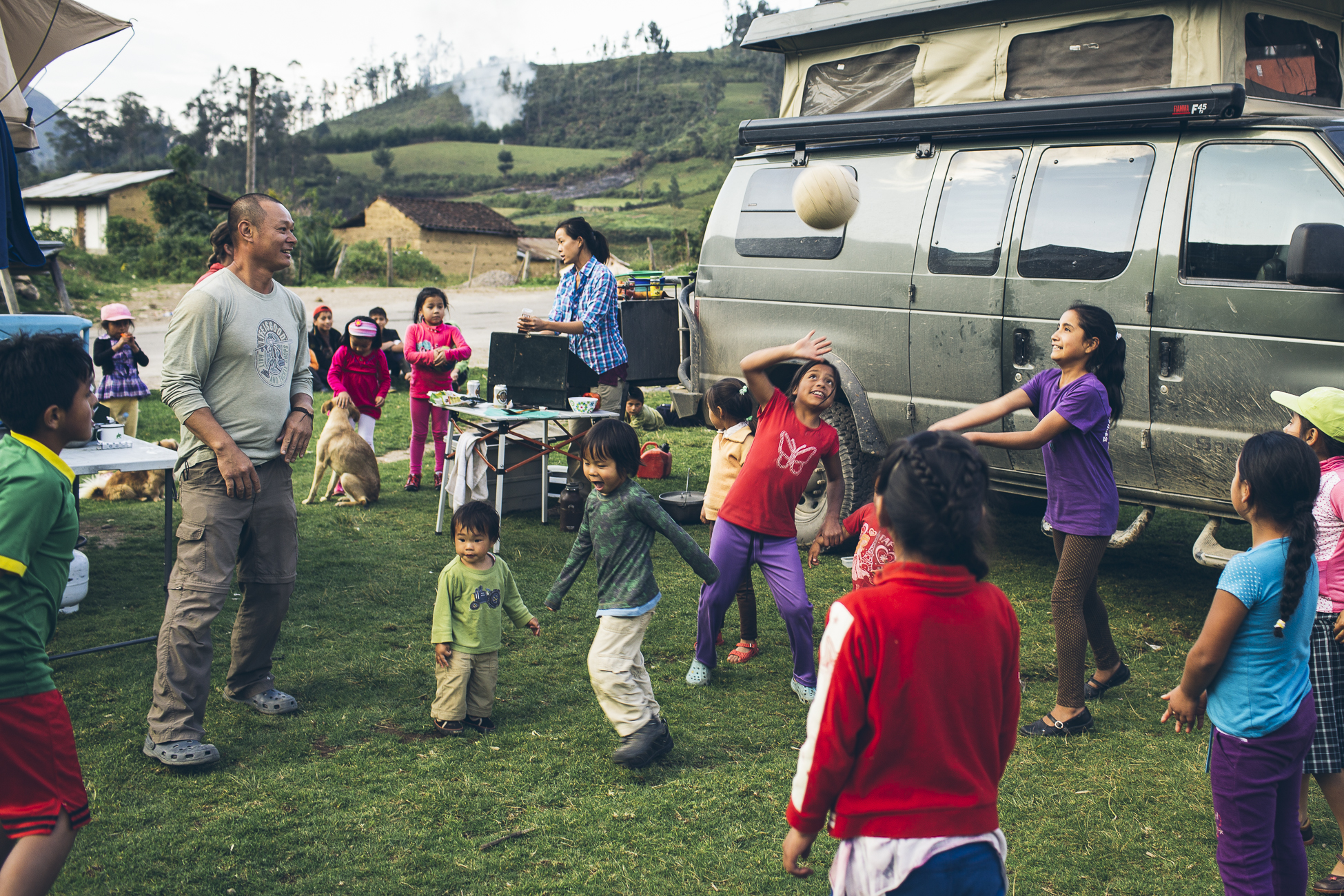
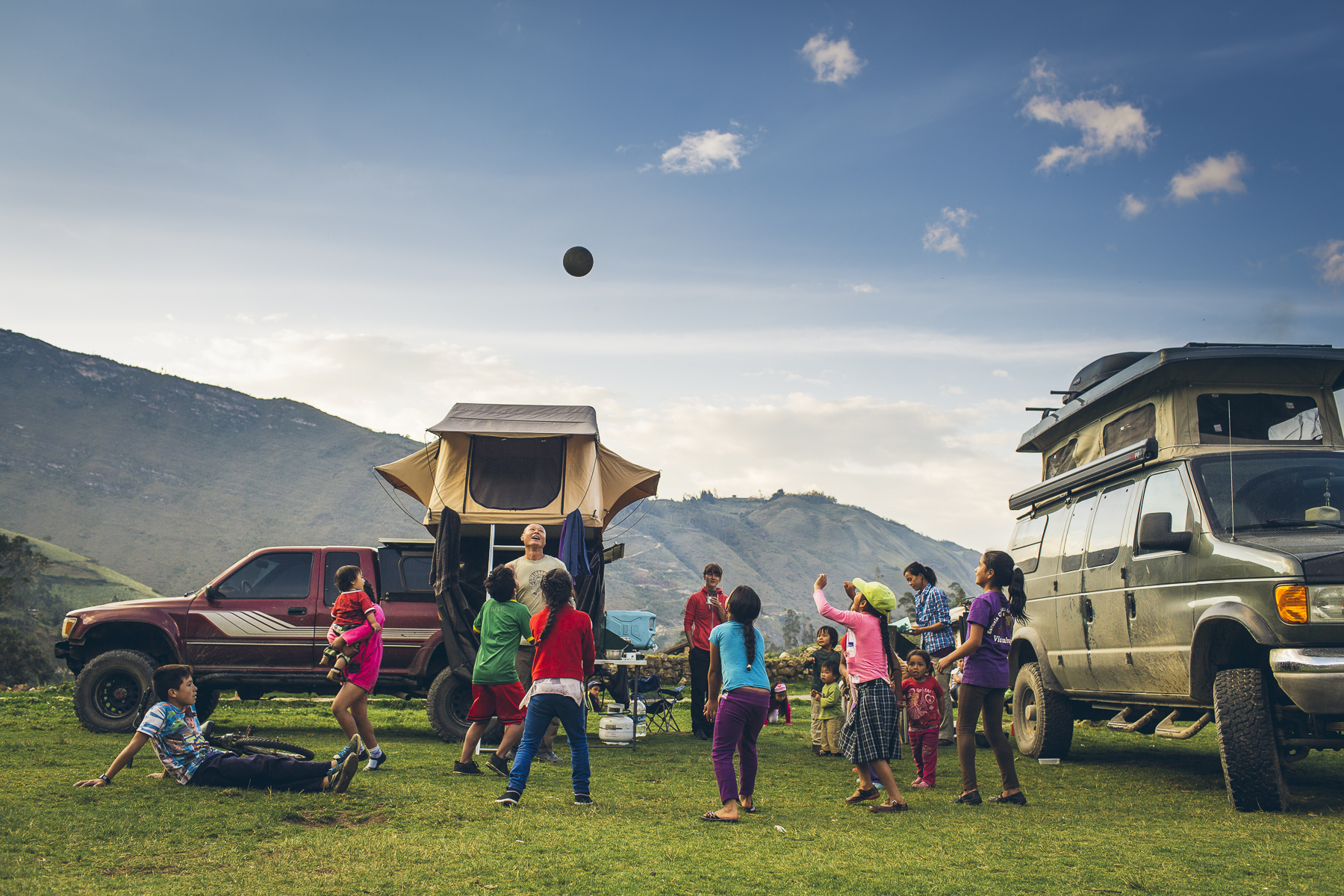
Celendin
One of the first things I noticed about Peru were the epic markets! The one we visited in the small town of Celendin was particularly delightful with items such as chia and flax seeds, bagged spices, huge barrels of olives soaking in brine, a ton of dried fruit and nuts, and fresh ginger and turmeric root. The fruits and vegetables were particularly fresh with a wide variety at each stall. I spent some quality time mixing up our newfound treasures into different types of trail mix for the road. It was such a treat to encounter food items that hadn’t been available or were very expensive before entering Peru. It was equally as fun chatting with the vendors. They always looked surprised to see green-eyed gringos browsing the produce section, and we had a few laughs with many of the ladies behind the tables piled high with goodies.


Cajamarca
After the winding dirt roads farther north we were happy that the roads were finally paved. Then we noticed that the curves were still there… but there was only one narrow lane for two directions of traffic heading towards Cajamarca. Fun! Once we arrived in Cajamarca we visited their Starbucks just to see what that experience would be like after not seeing one since the United States. It is kind of eerie that when you walk into a Starbucks you could literally be anywhere in the world because they are all identical. We wandered around the central part of town and it had an interesting 1980’s BBC travel show vibe to it. Retro.
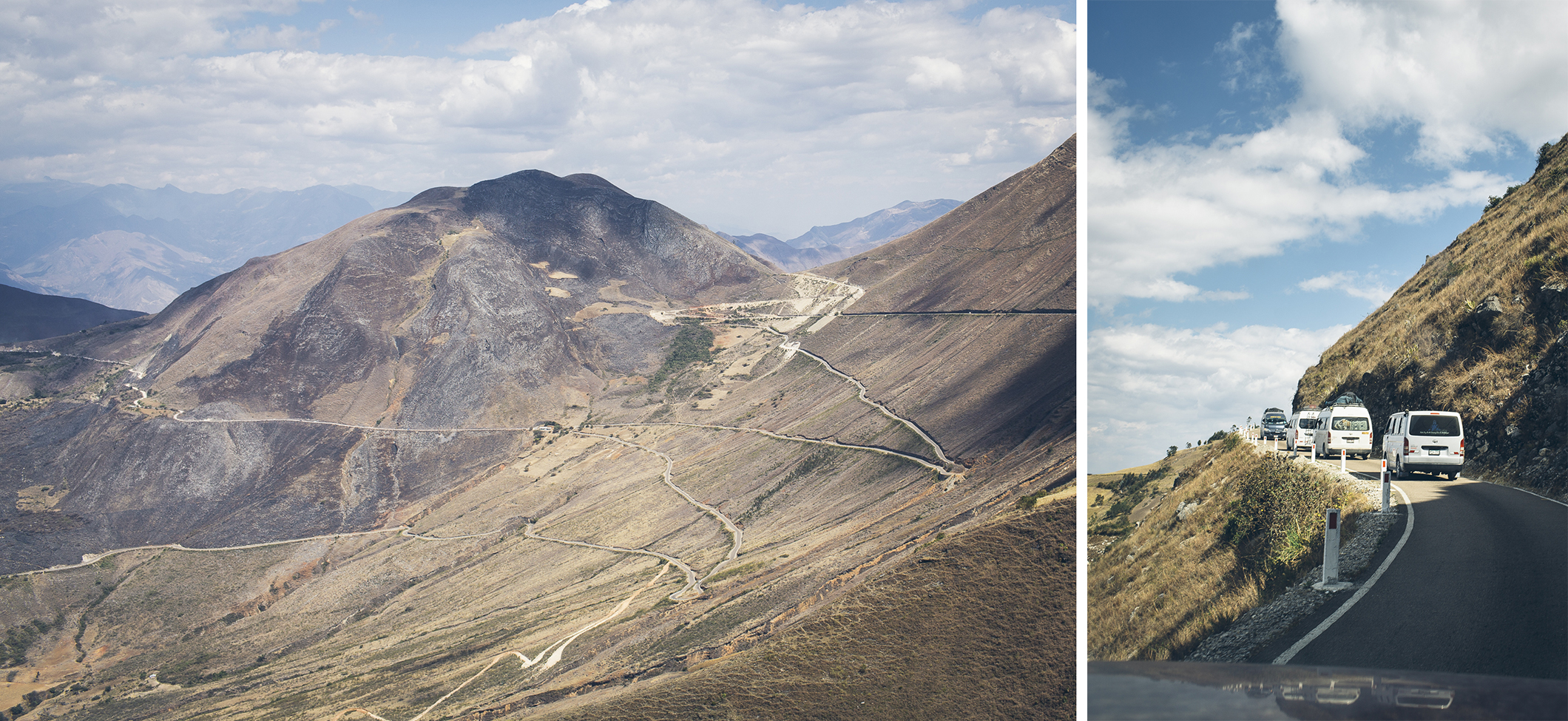
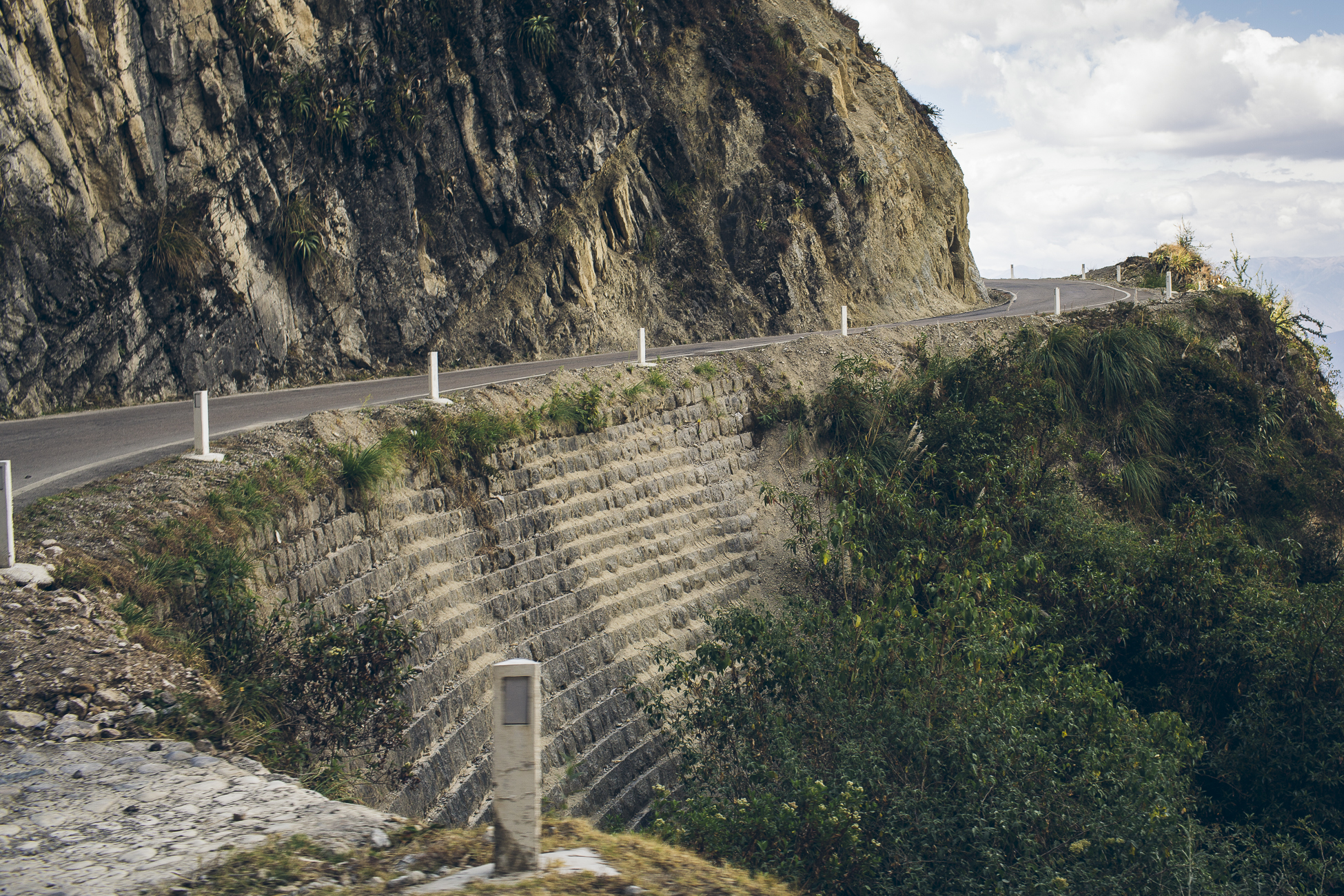
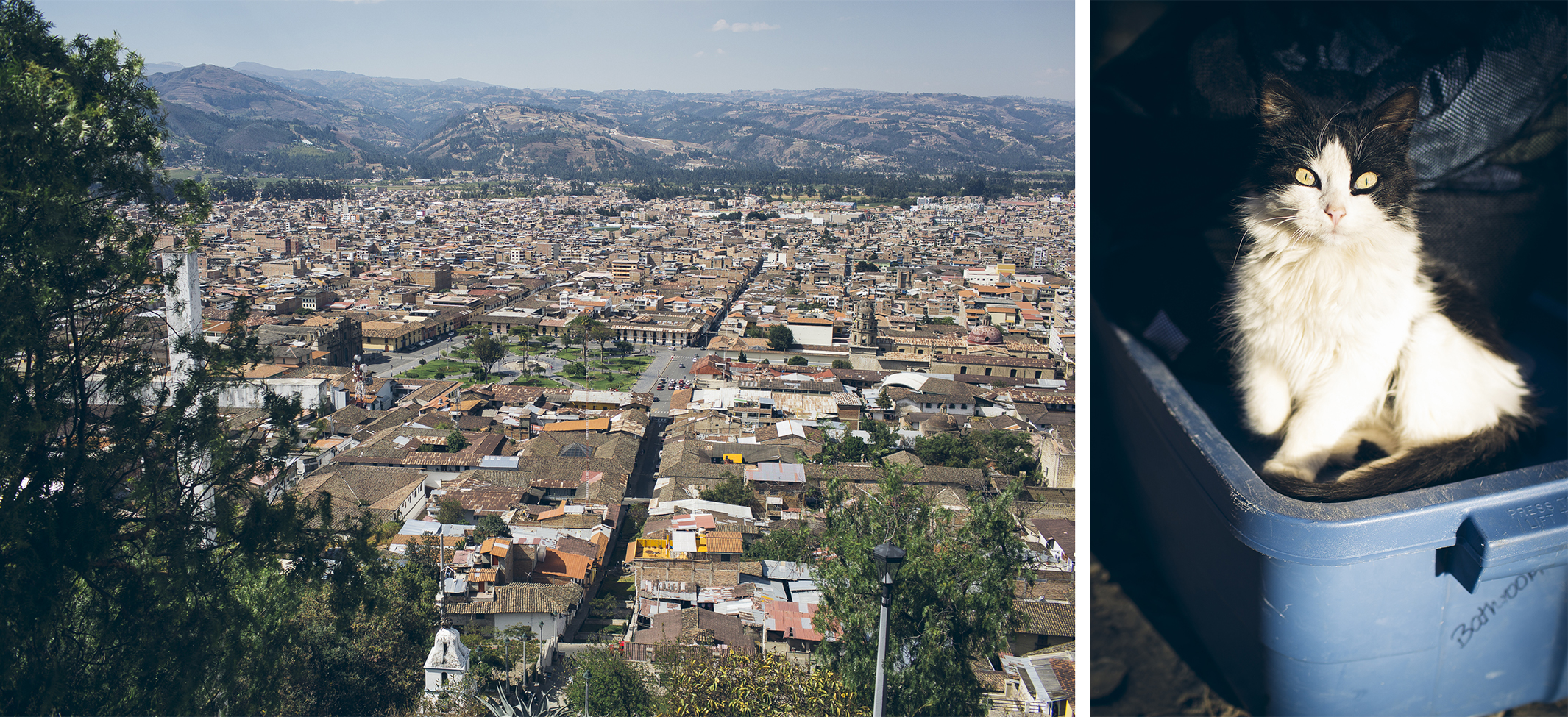
It is hard not to notice the tension and controversy surrounding gold mining in the province of Cajamarca. The Yanacocha mine is the largest open-pit goldmine in South America, and the second largest in the world, at 535 square miles. The mine has been operating since 1993 by the Newmont Mining Company, World Bank’s International Finance Company, and Buenaventura of Peru (Peruvian mining company). In 2011 Newmont proposed expanding its operations with a new mine, Conga. The project proposed an extraction of copper and gold from 3,069 hectares of land in the Cajamarca province. The new Conga Mine project was halted after violent protests forced the Peruvian government to declare a state of emergency.
The project is currently on hold, possibly until 2018. We saw signs all over the region with the words “No Conga” spray-painted in red. We saw murals on the sides of buildings, “No Conga” etched into the land on the mountainside, and plenty of newer mining company owned Toyota Hiluxes making their way through the roads and up out of town to the mine site.

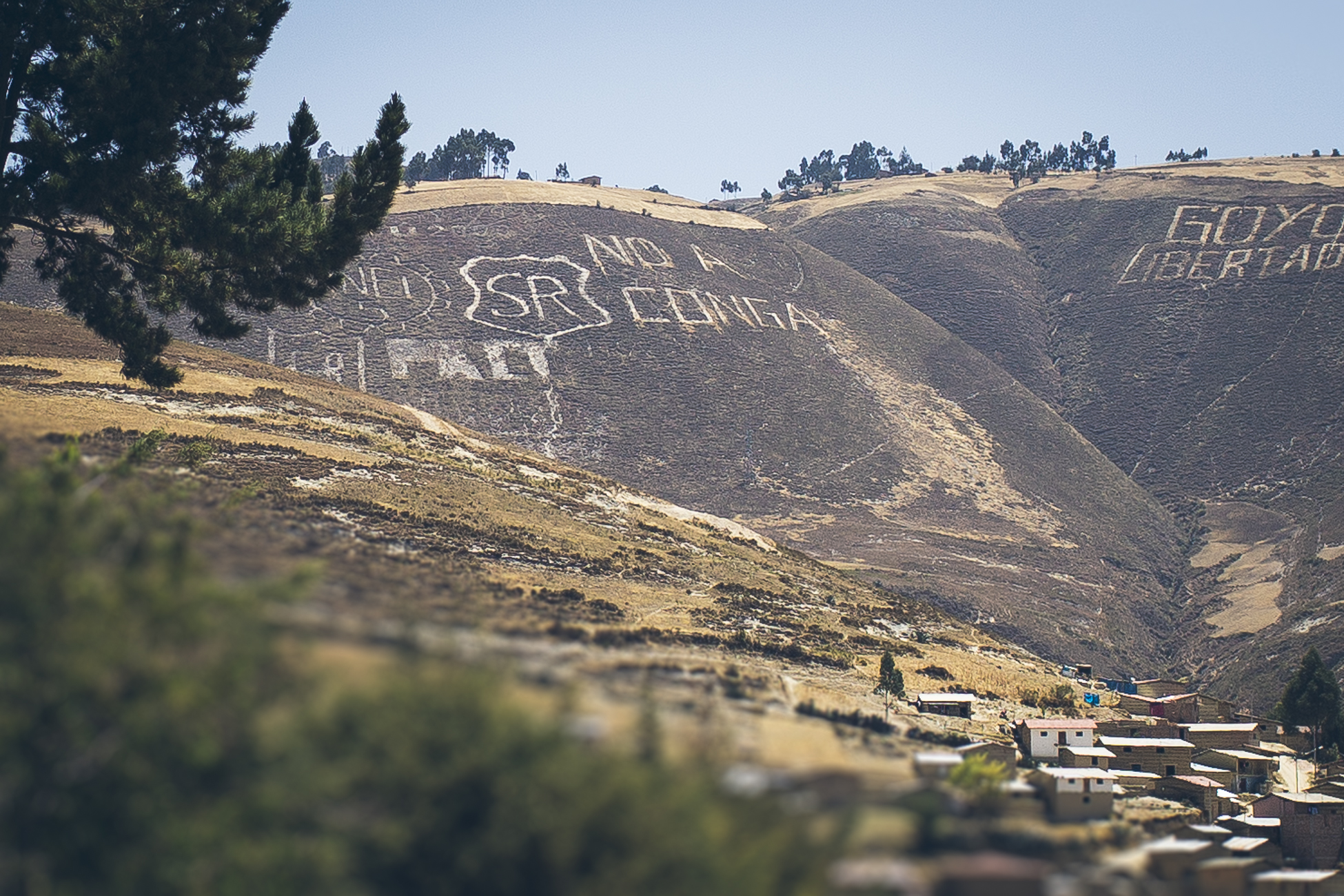
Locals have been fighting against the Yanacocha mine since its inception for a variety of reasons. Critics say that the local government accepted bribes from Newmont and didn’t consult with local communities about the project before starting operations. Local organizations and citizens say the mine has contaminated the water. In June 2000 a contractor of Newmont’s spilled 335 pounds of mercury from the mine along a road stretching through three local towns. The chemicals have also been linked to gastrointestinal cancer in local citizens and massive trout die-offs in the rivers. A 2014 study evaluated the diet composition of a rural population near the gold mine in the Cajamarca district of Peru. It found that daily intakes of arsenic, cadmium and lead exceeded the European Food Safety limits, and the intake values were shown to be higher in populations closer to the mine.
We could go on and on about the details, but this little bit of information shows why hundreds of people left Cajamarca together to form the town of Dos de Mayo, and likely other small communities throughout Peru. If you want to do your own reading on the subject check out these articles on No Dirty Gold, Upside Down World, and Peru This Week, and watch Open Pit on Vimeo.
Cumbe Mayo Aquaduct Site
We took a dirt road drive from Cajamarca to Cumbe Mayo (translates to “Thin River”) to check out the great views, interesting stone forests, and pre-Incan aquaduct carved out of volcanic rock thought to be one of the oldest man-made structures in South America. Archeologists are uncertain as to why these were built but guess that they were used to regulate and control the speed of the water. Sharp right angles carved in the rock slow down the flow, still doing its job after all these years.
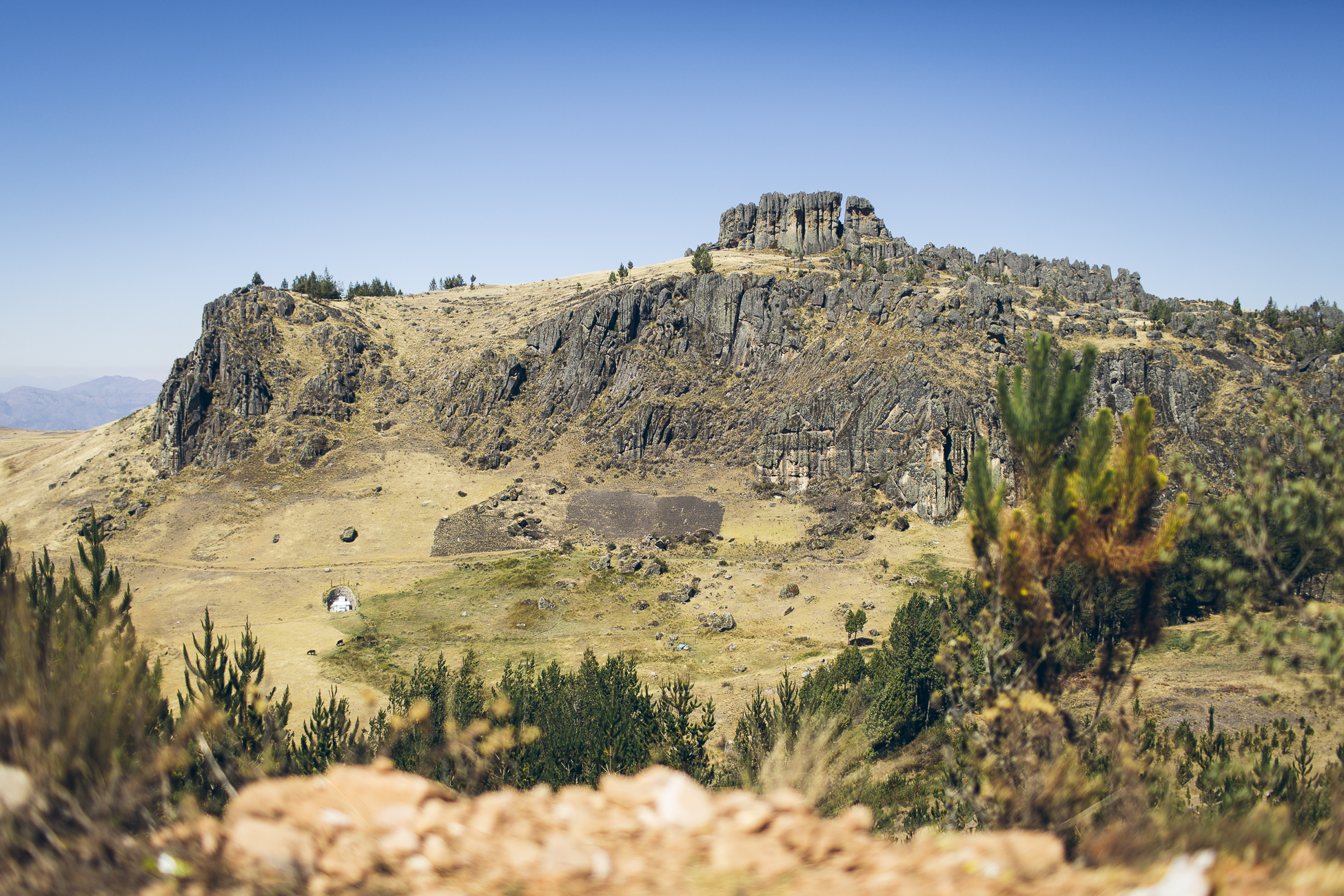
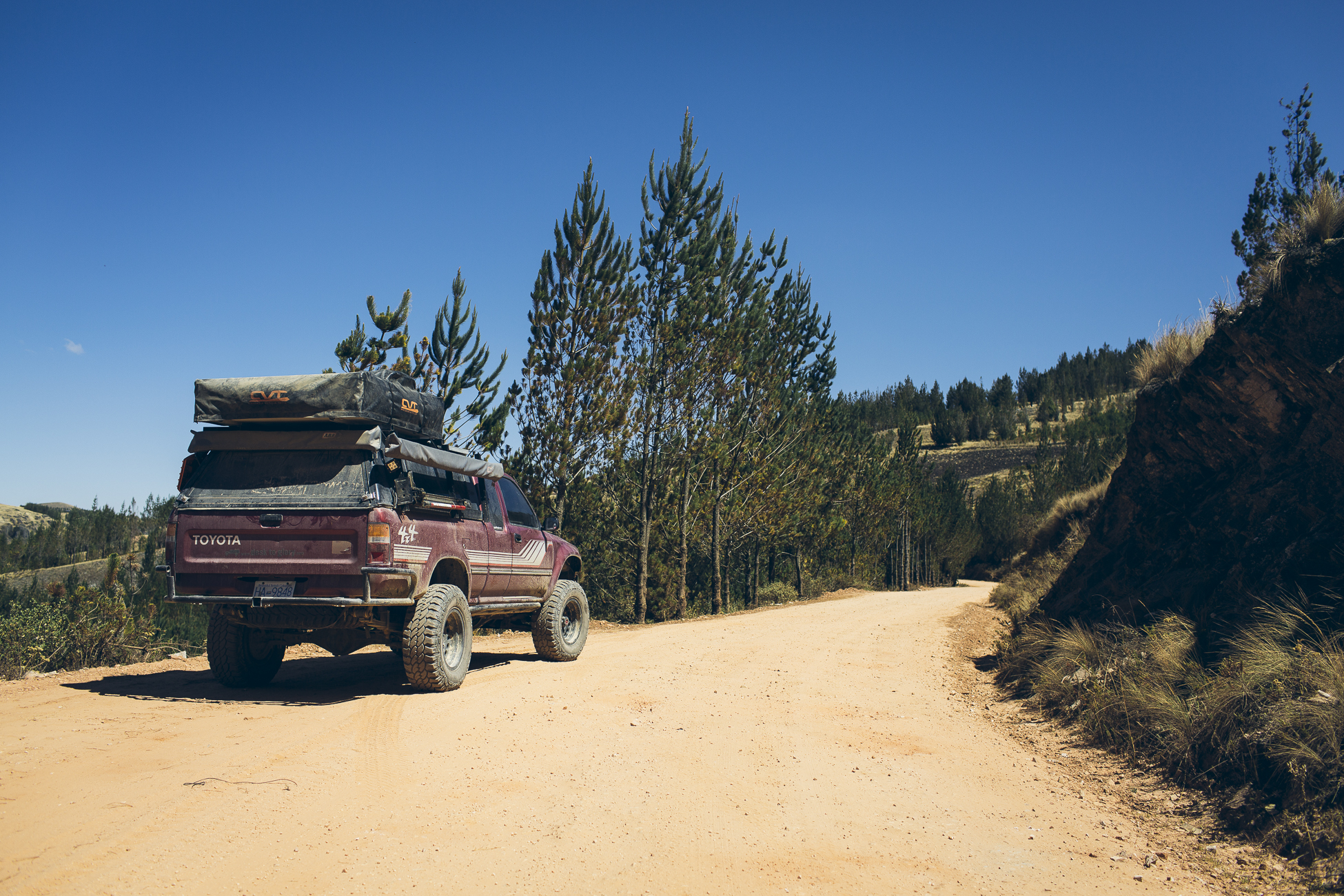
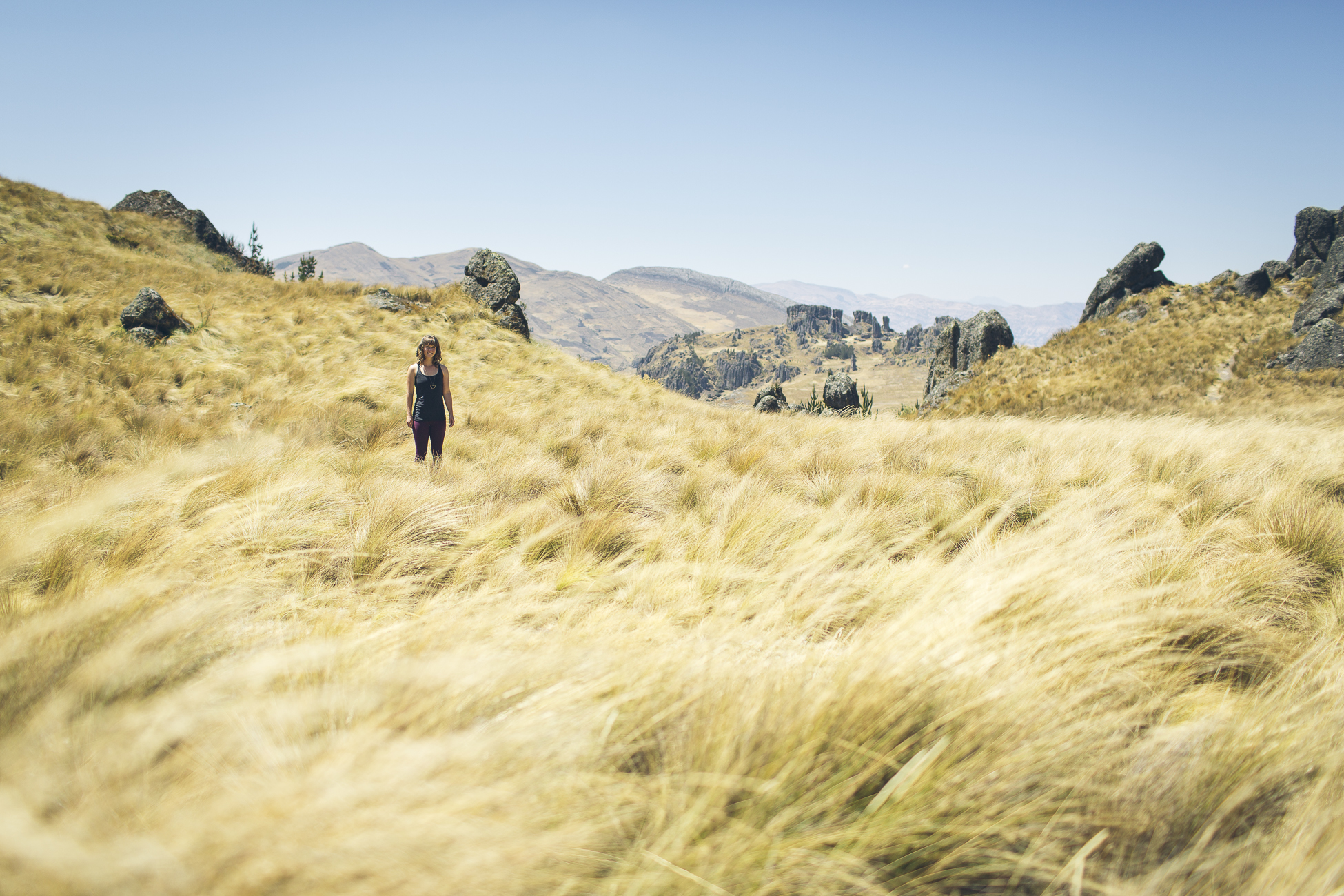
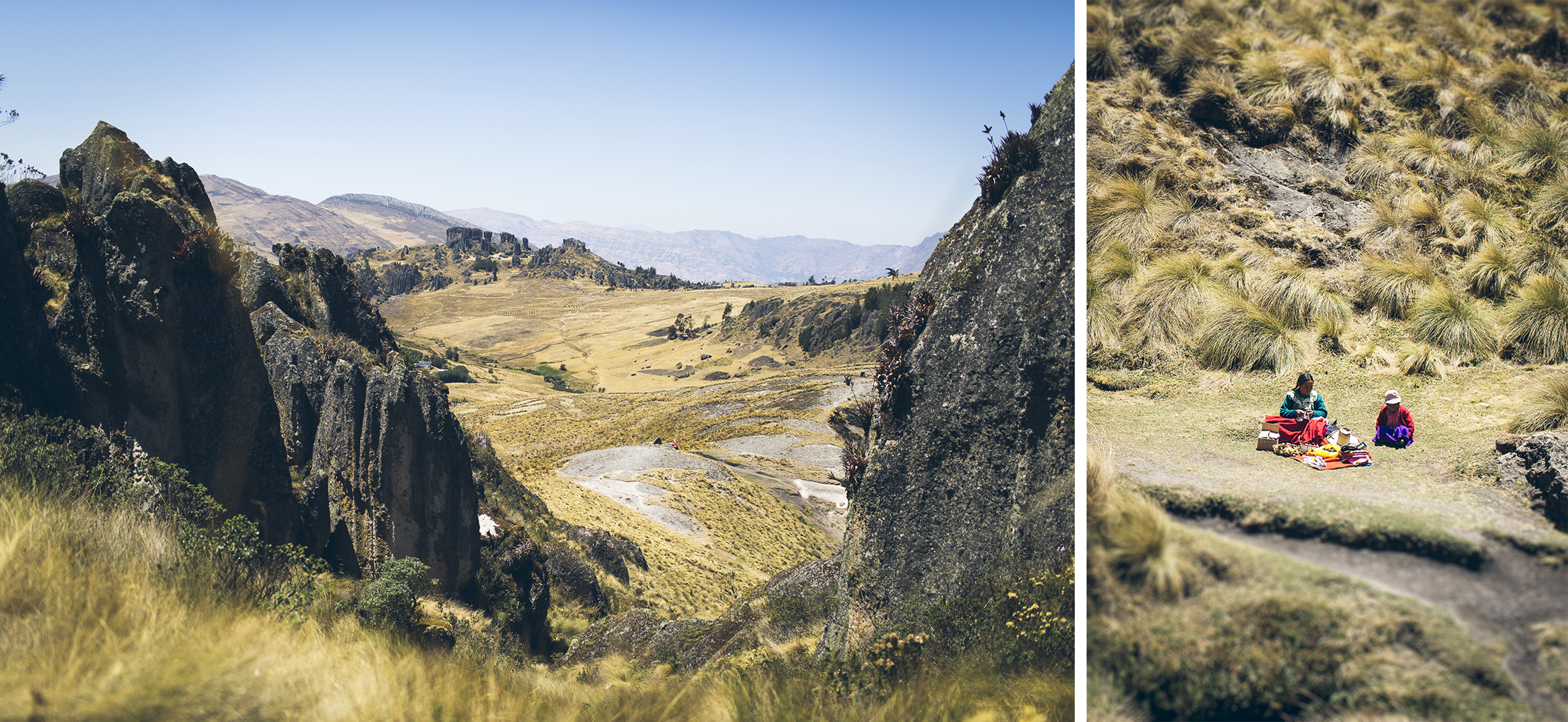




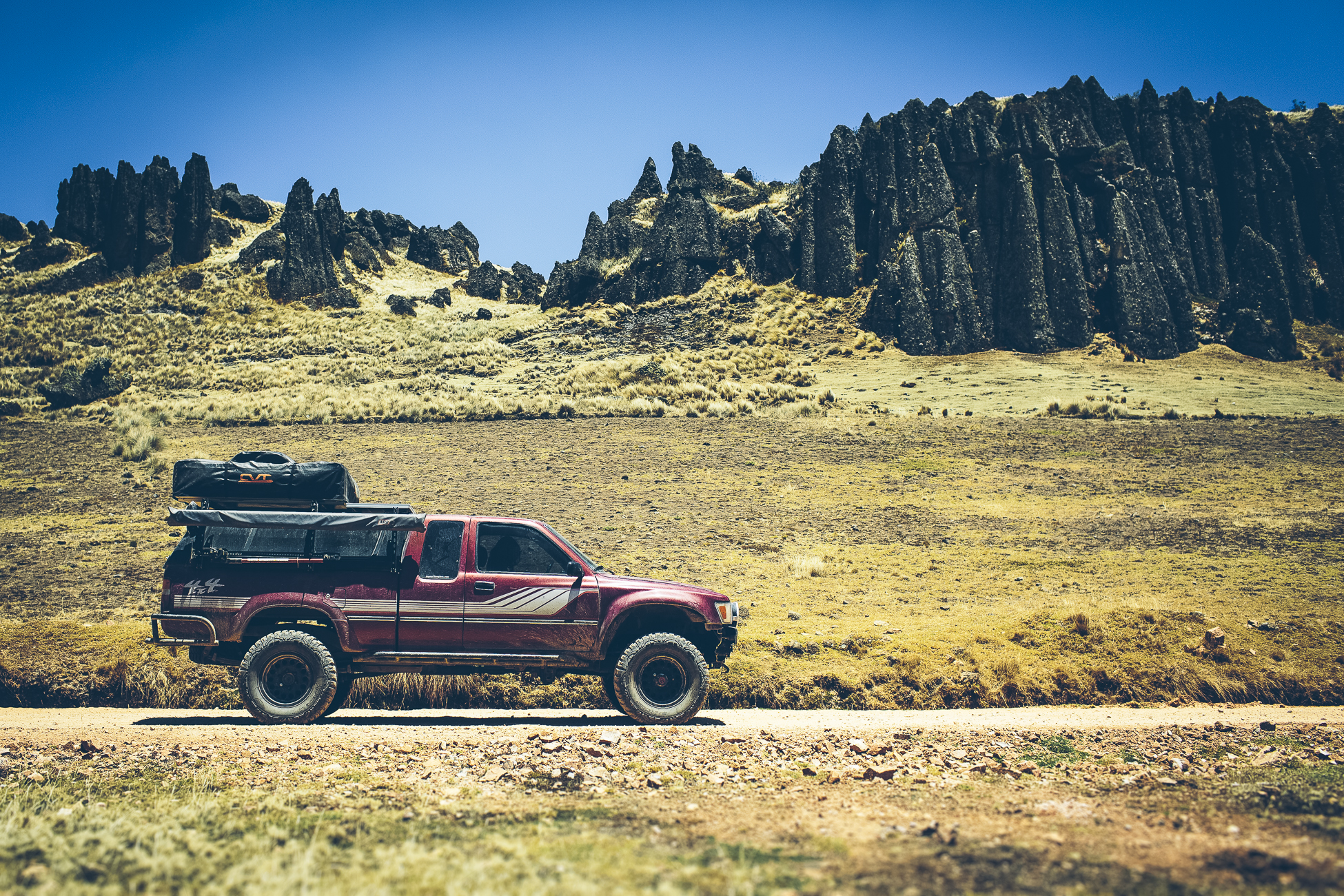
All in all, Northern Peru was one of the highlights of our trip. We found the people to be extremely friendly, the sights were full of history and culture, the food was fresh and delicious, and we enjoyed spending time adventuring over the backroads leading to some interesting sights, smells and sounds. We had many other items on our list for Northern Peru, but our exhaust pipe issue was pushing us to head to the coast, where we hoped we would find the parts we needed to fix up Little Red.

Awesome post! It’s fun to see all the possible places for an Itenirary through Northern Peru. Cool photos and a fun read! Thanks for taking the time to post!
Fantastic, as always.
Wow, this post really brought us back. Seems like so long ago! The photography is amazing as always. I love the style.
Wow, what amazing scenery!